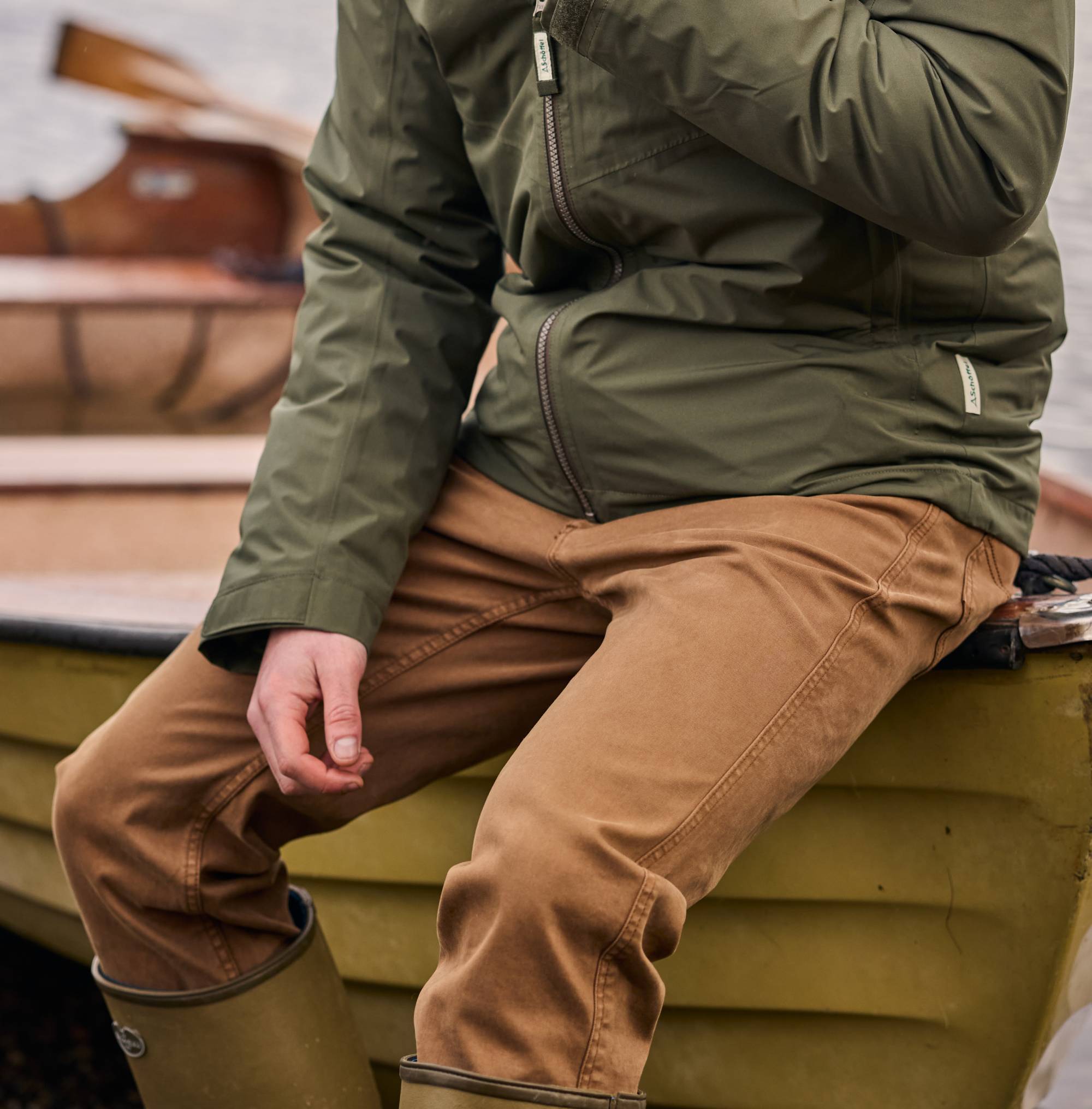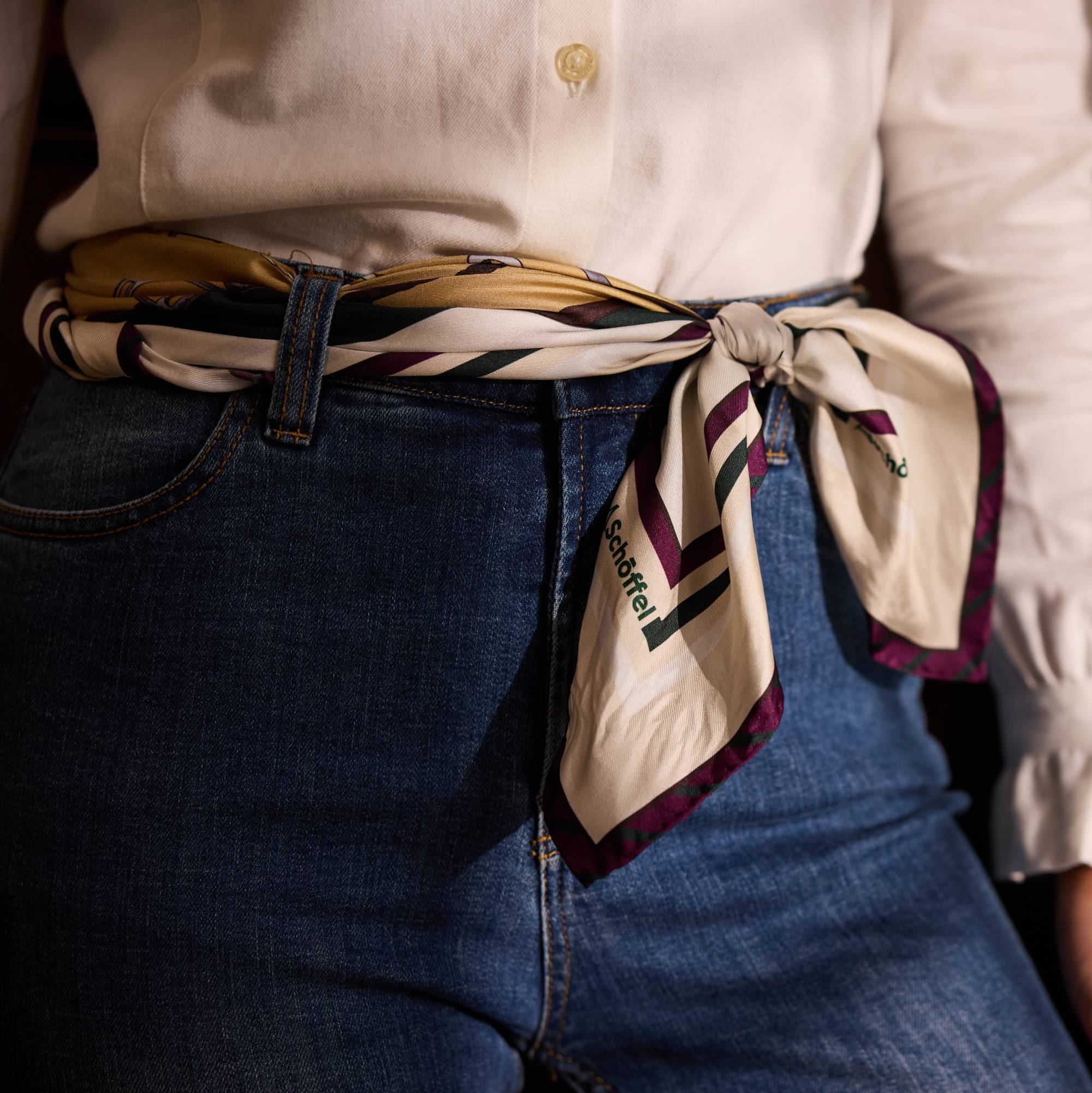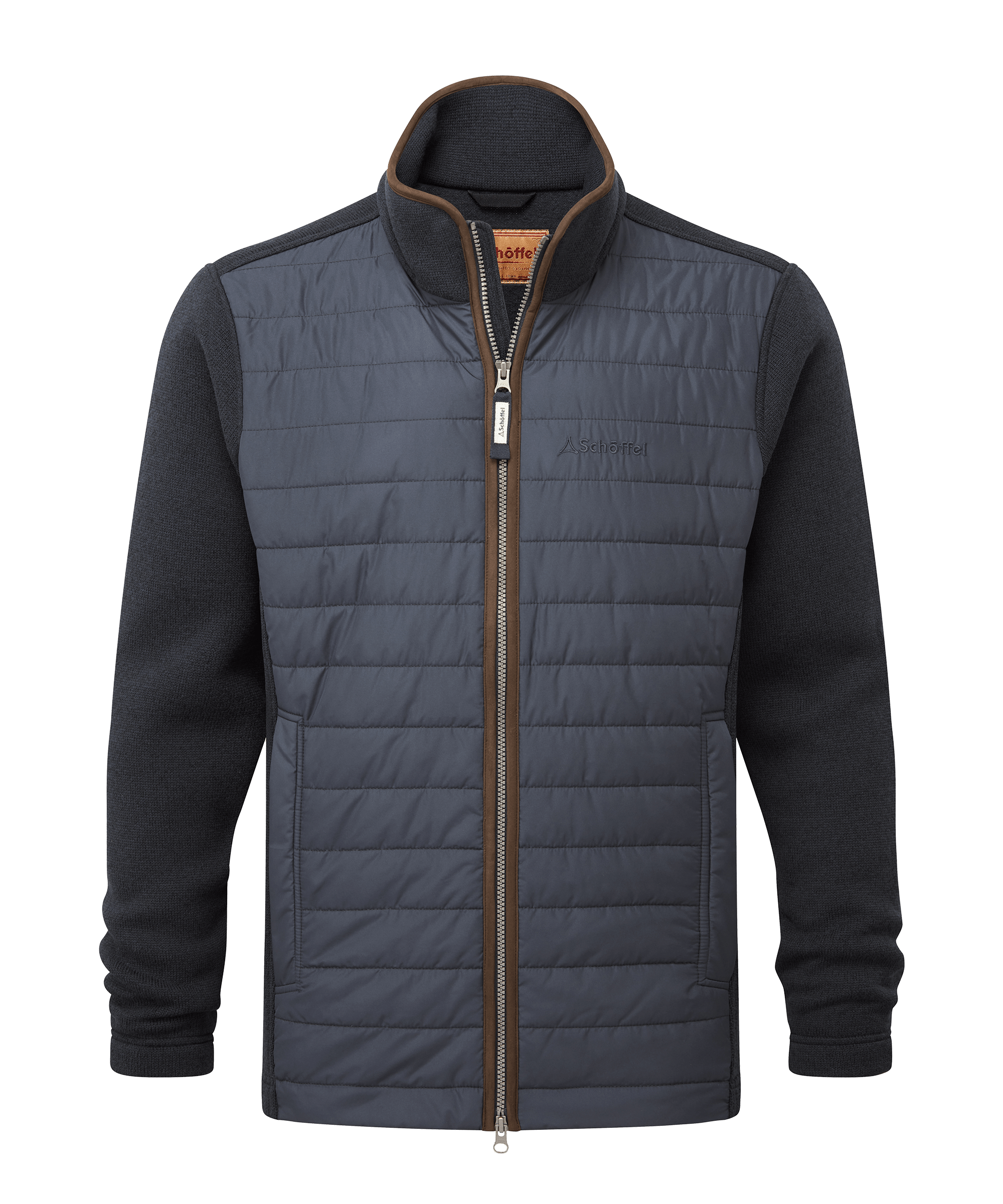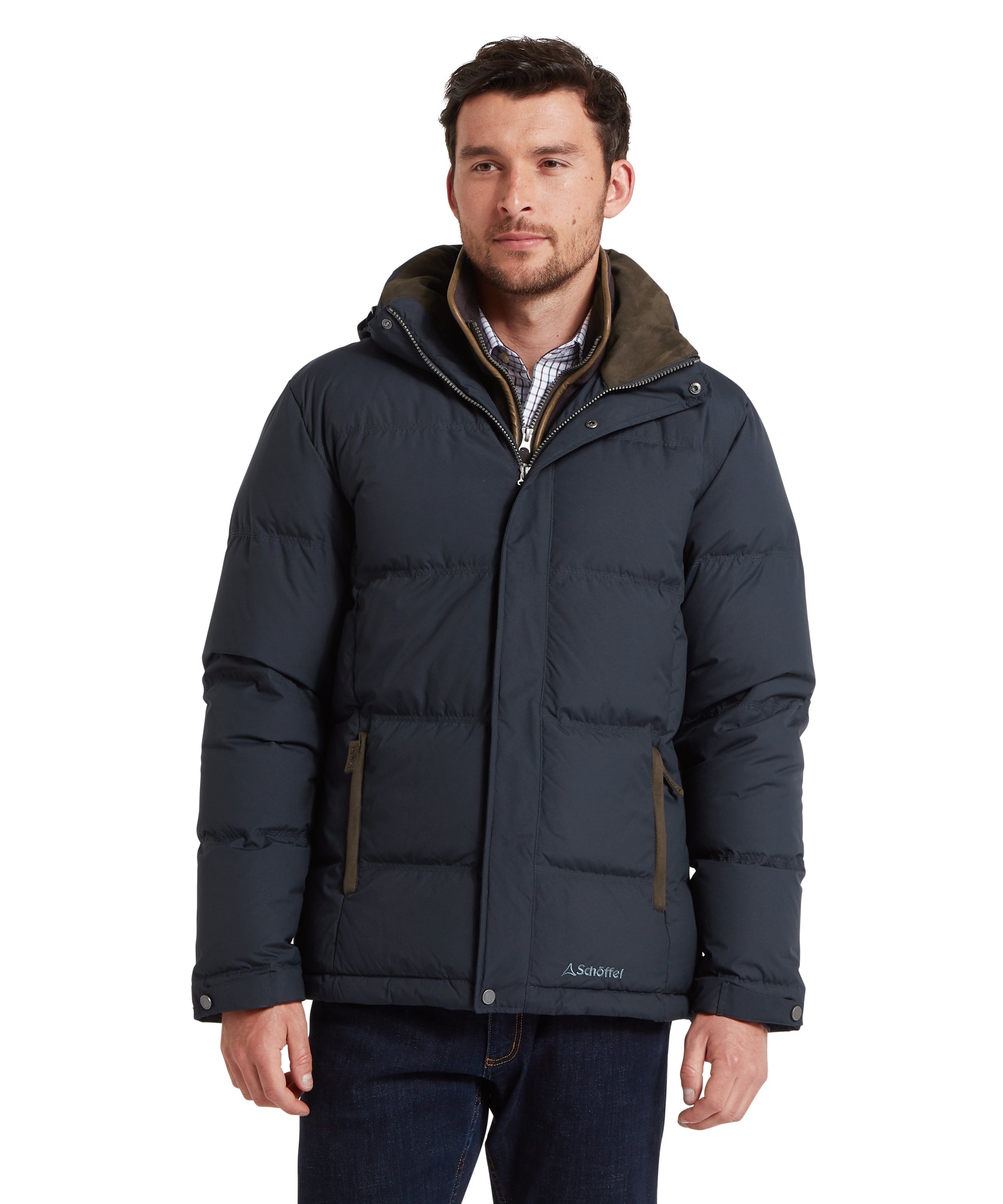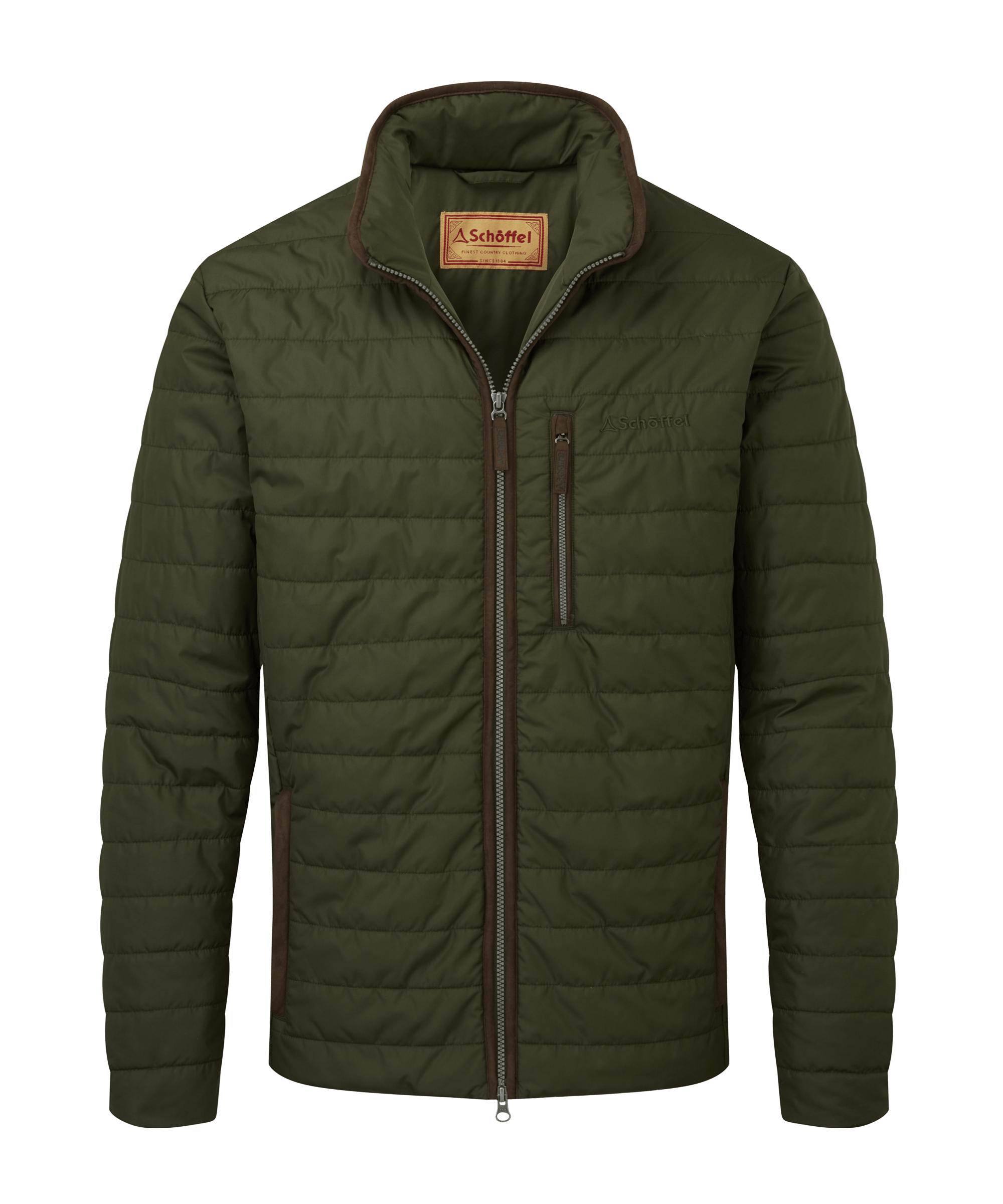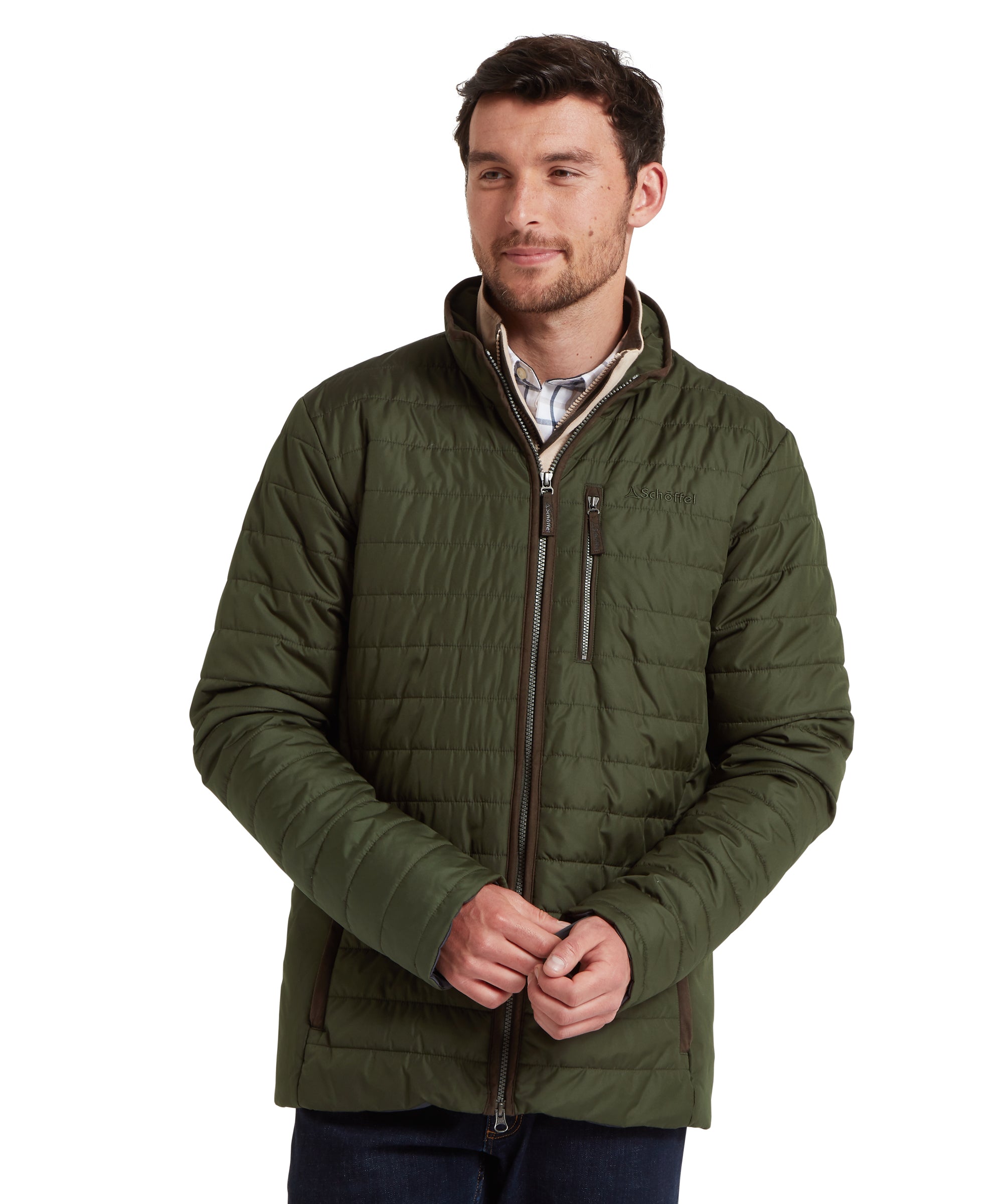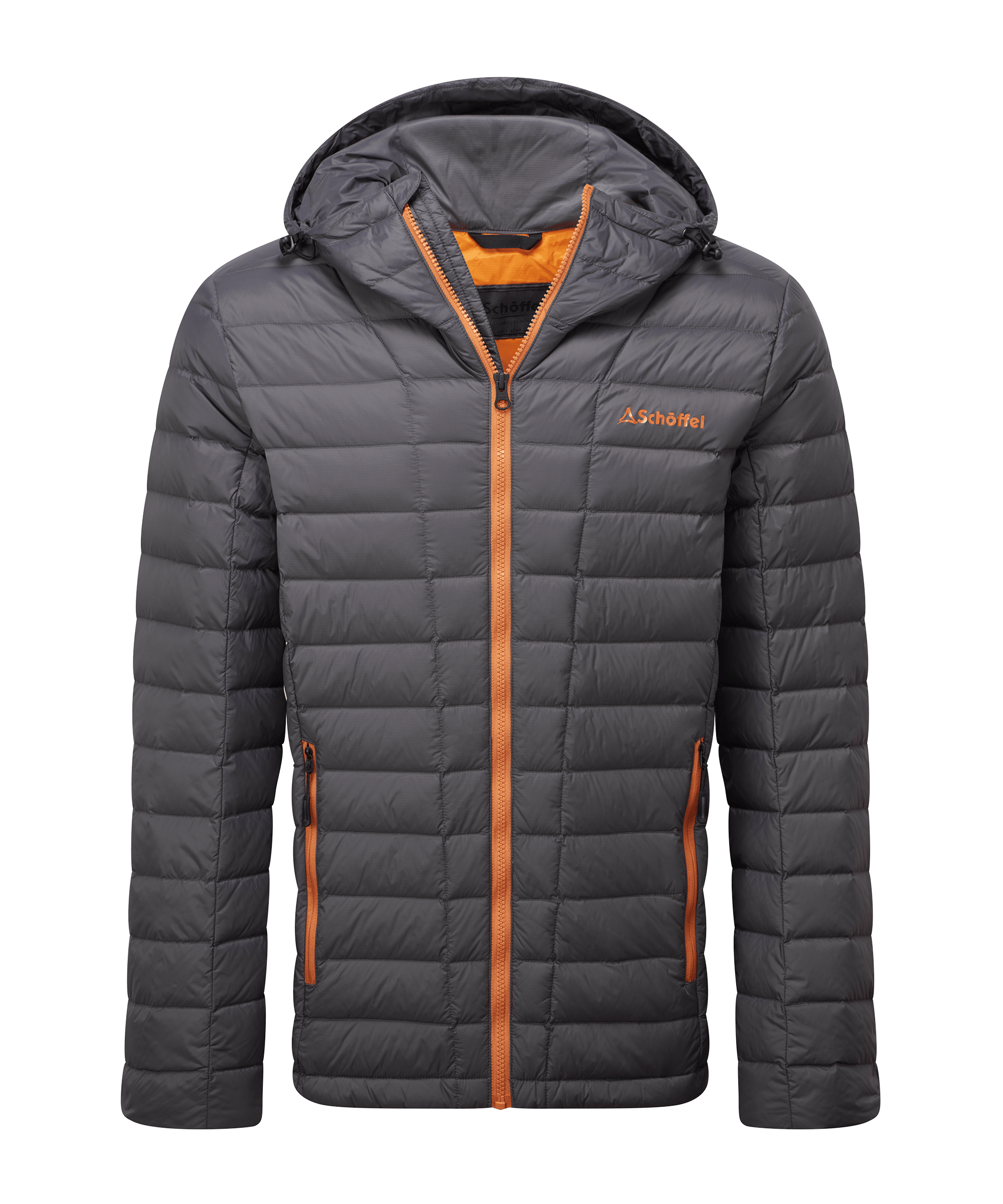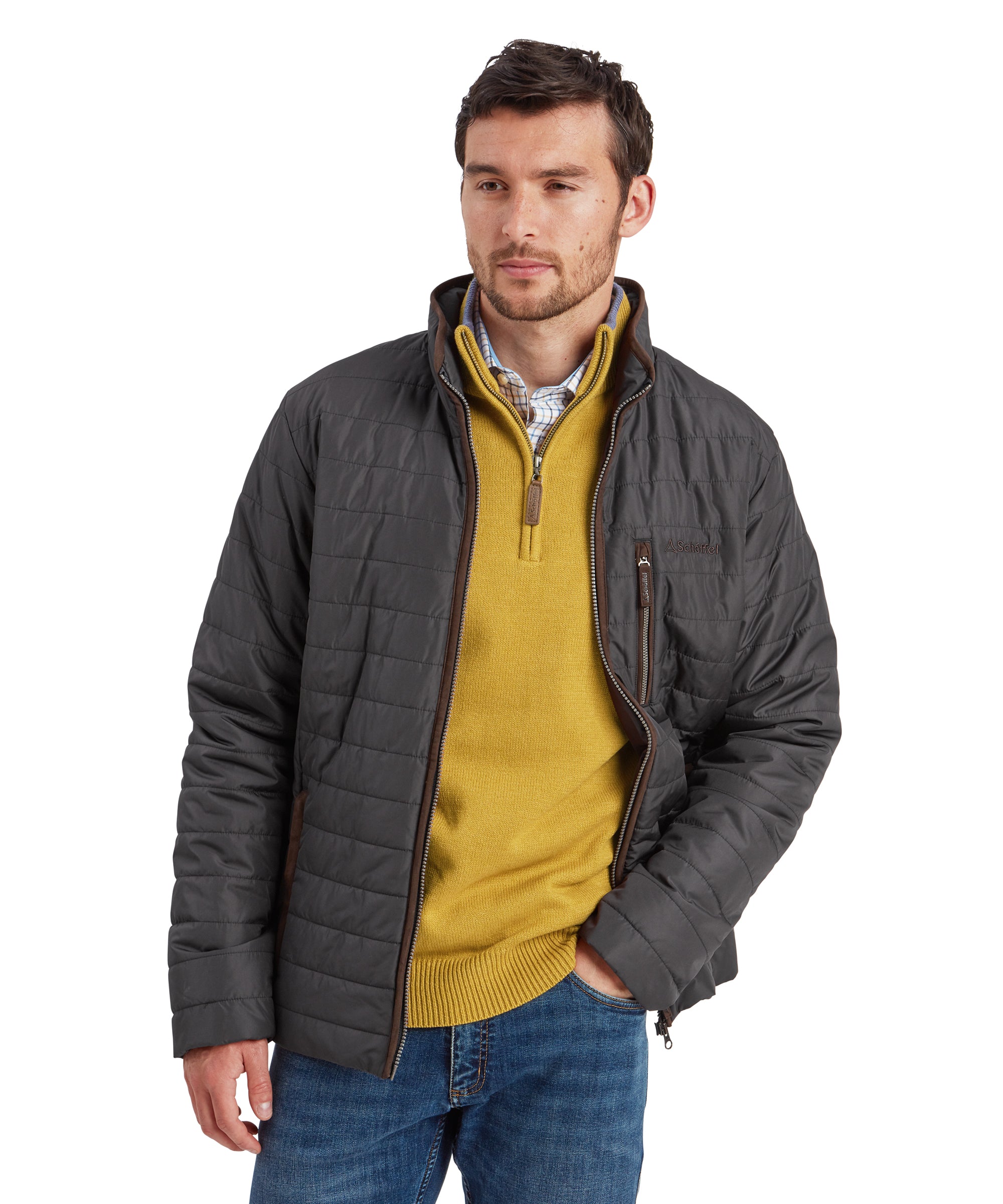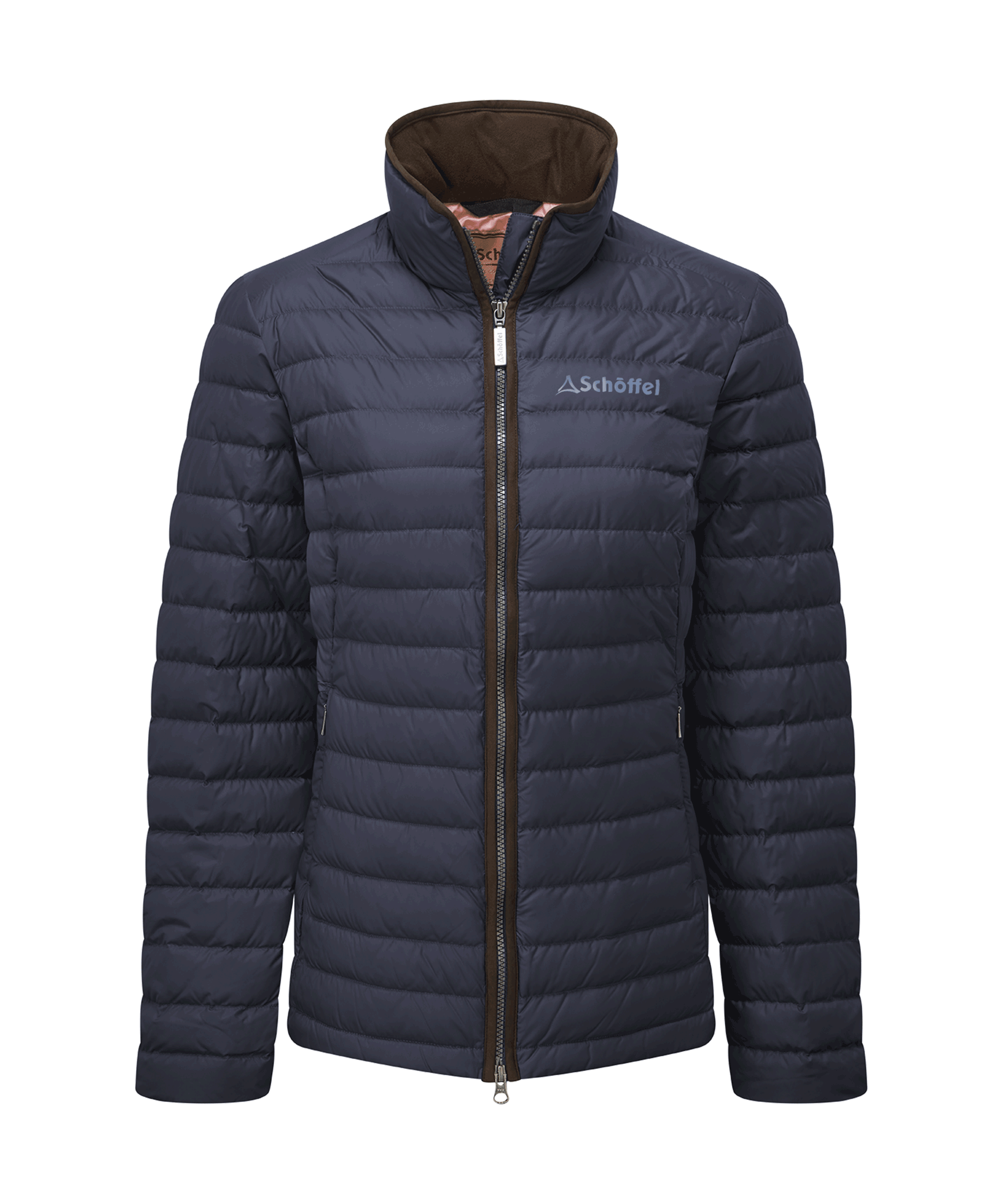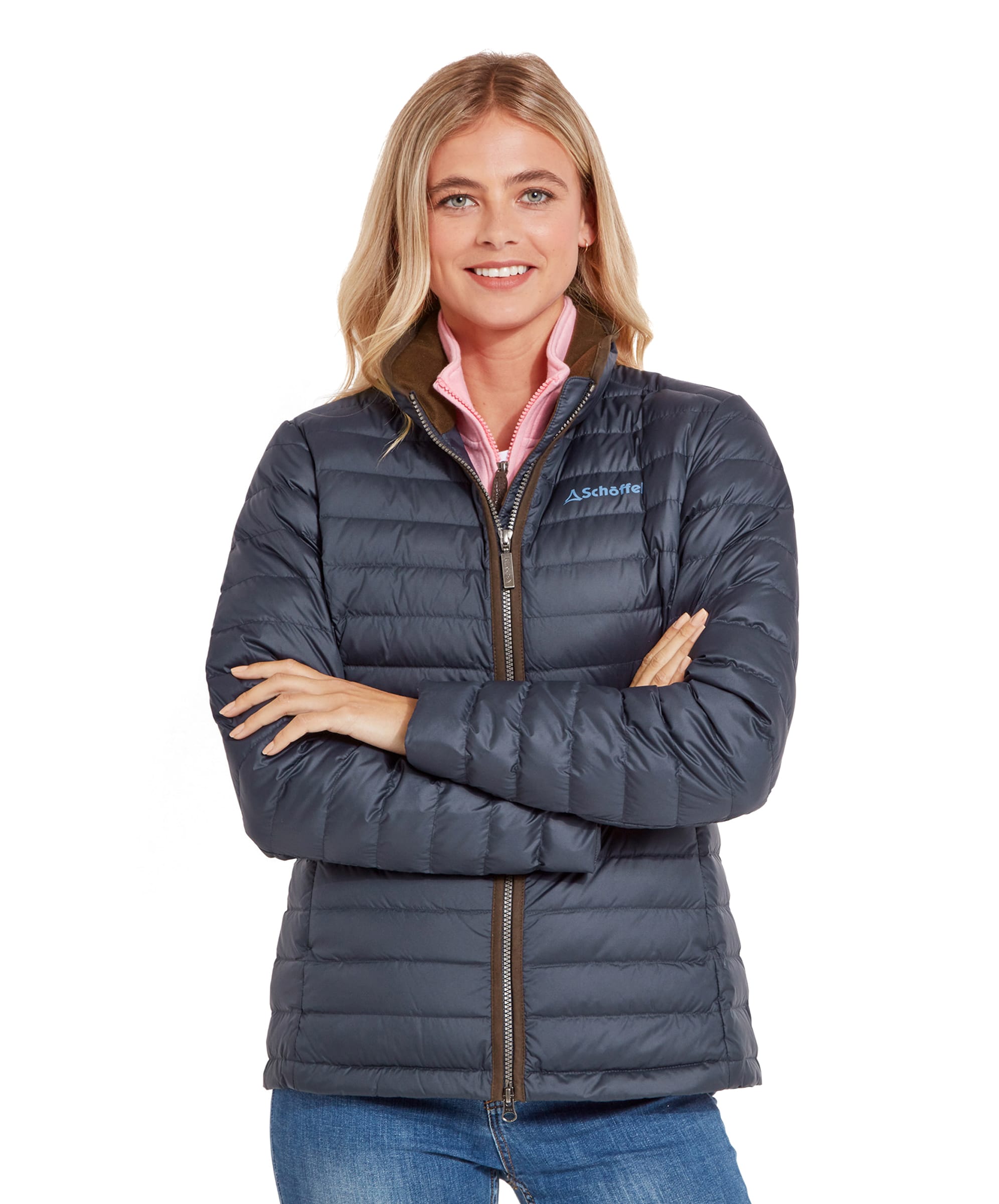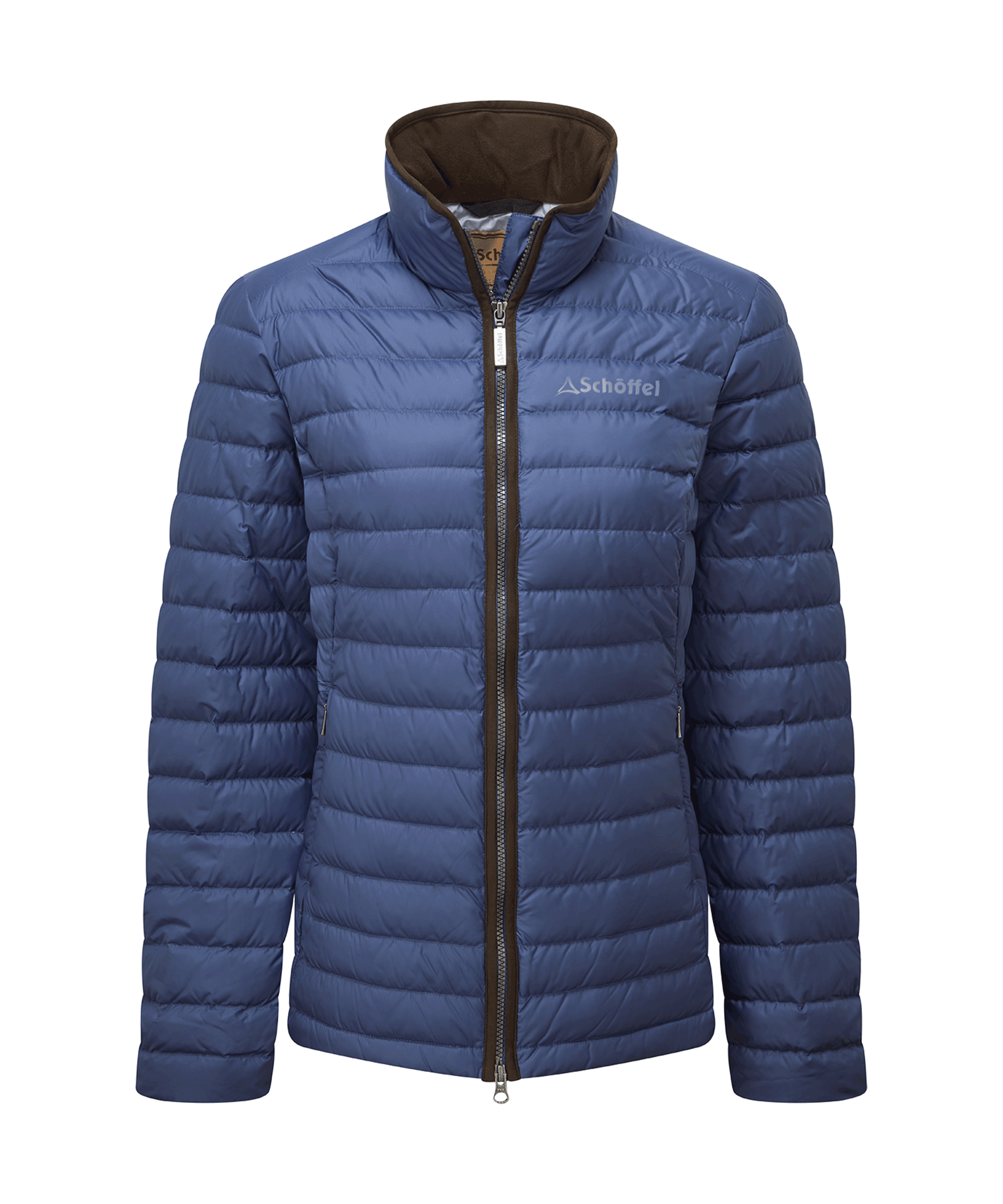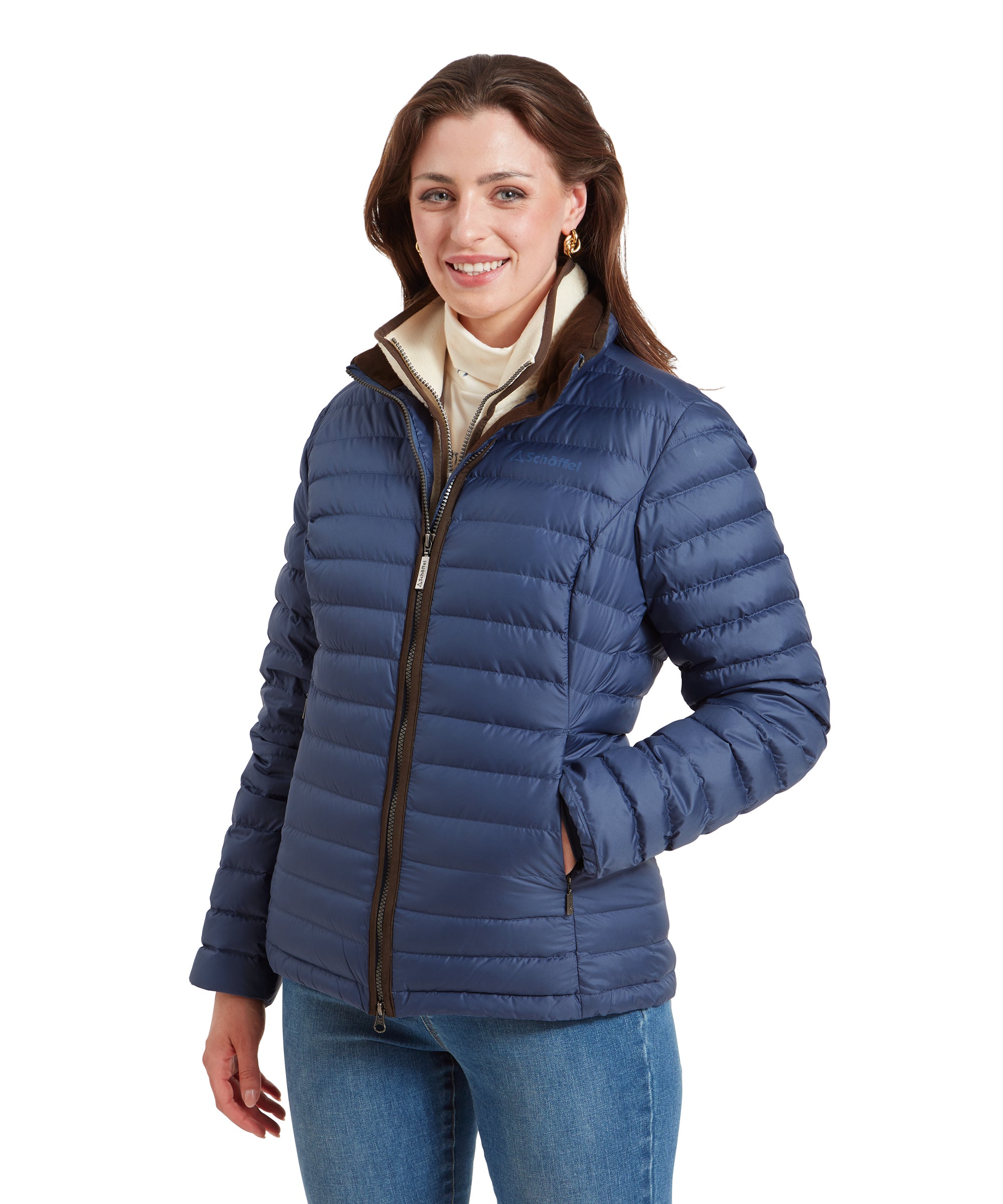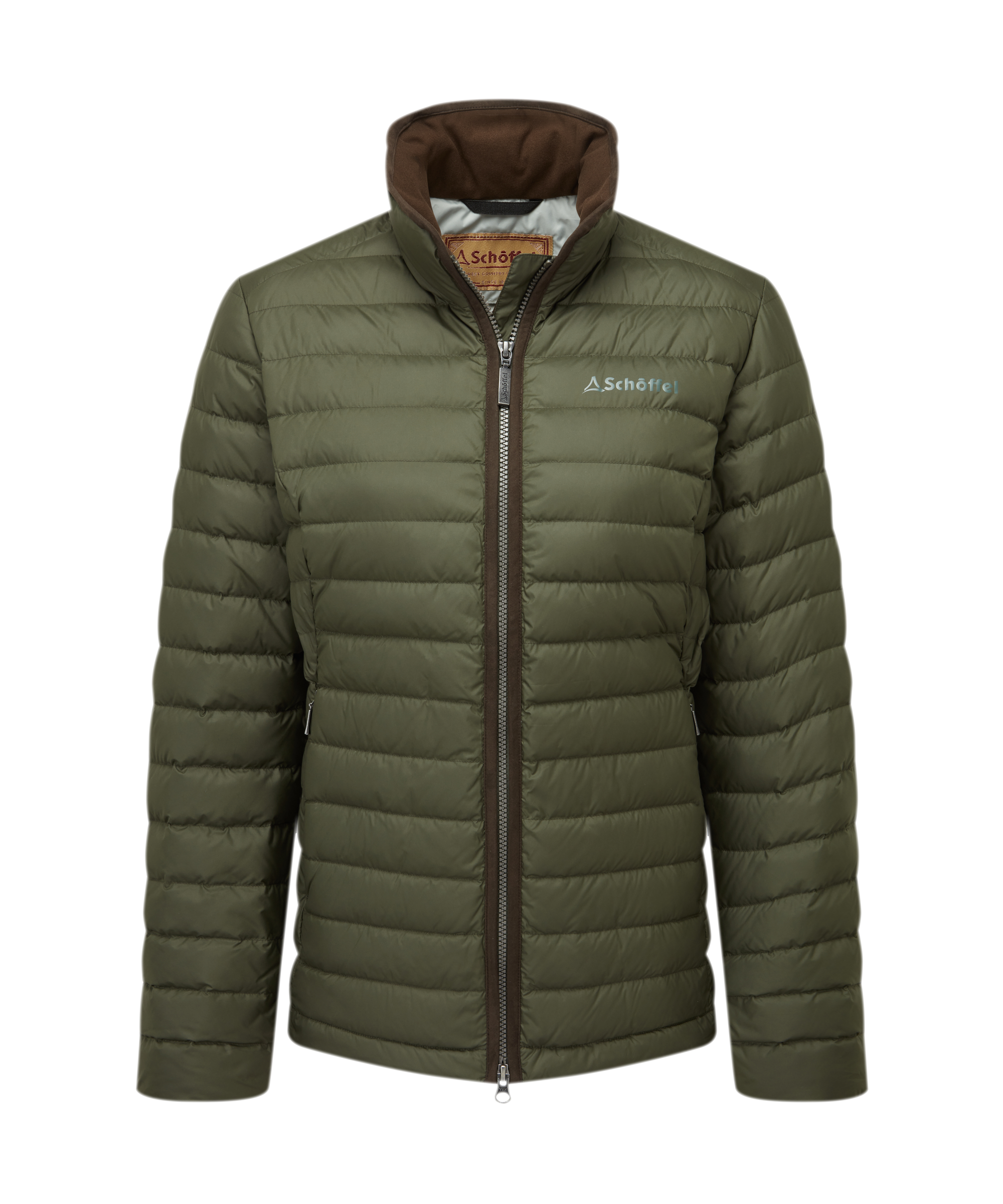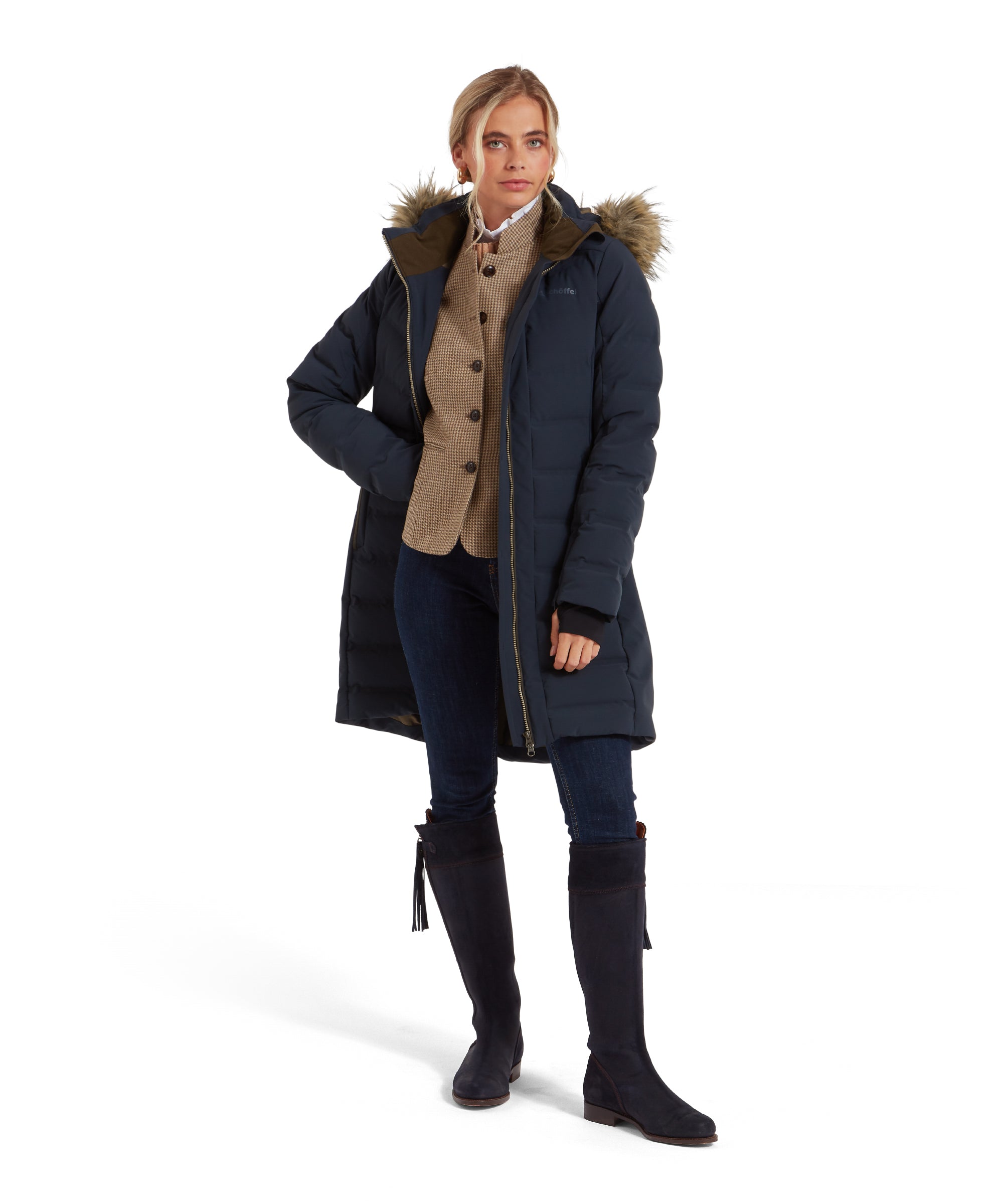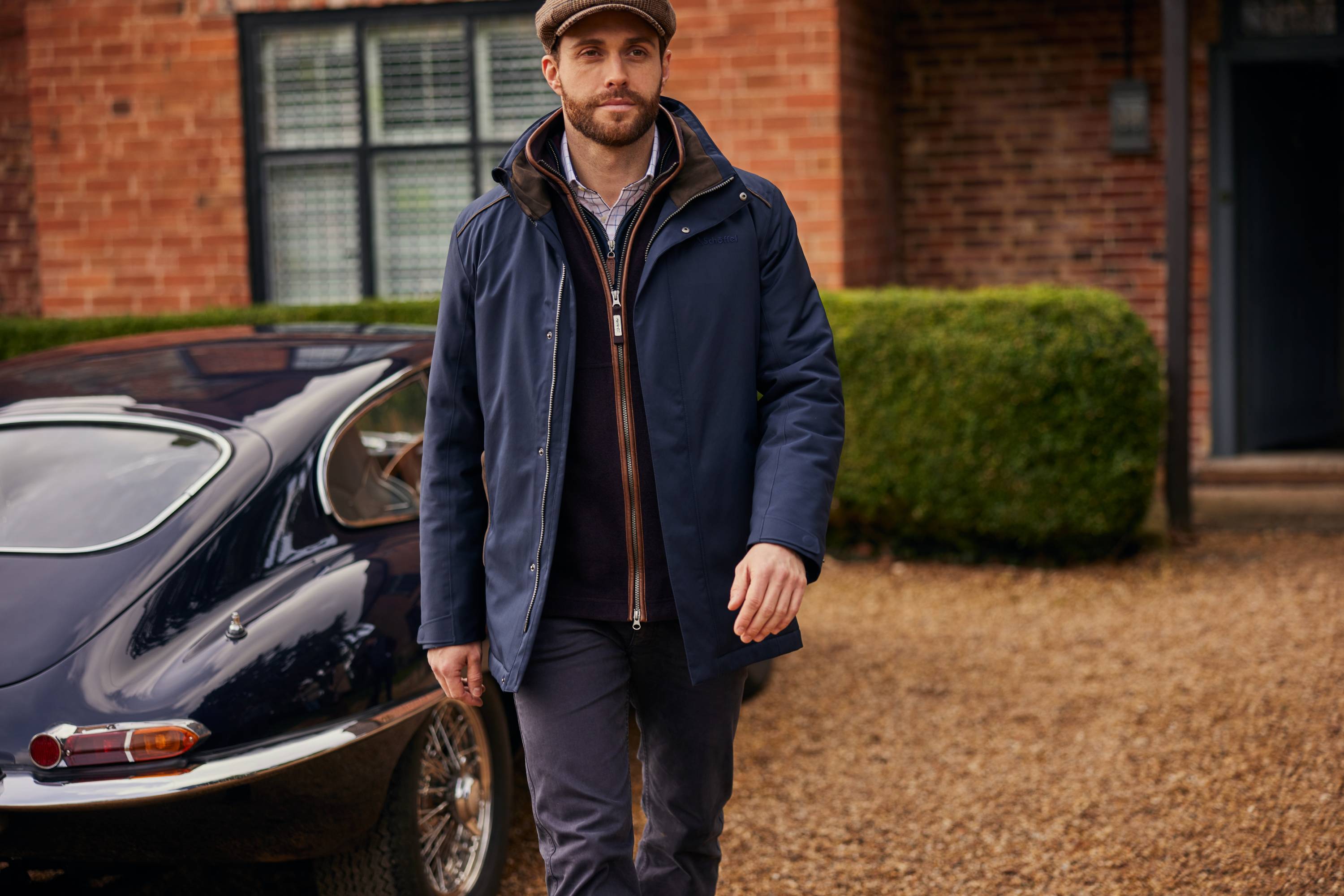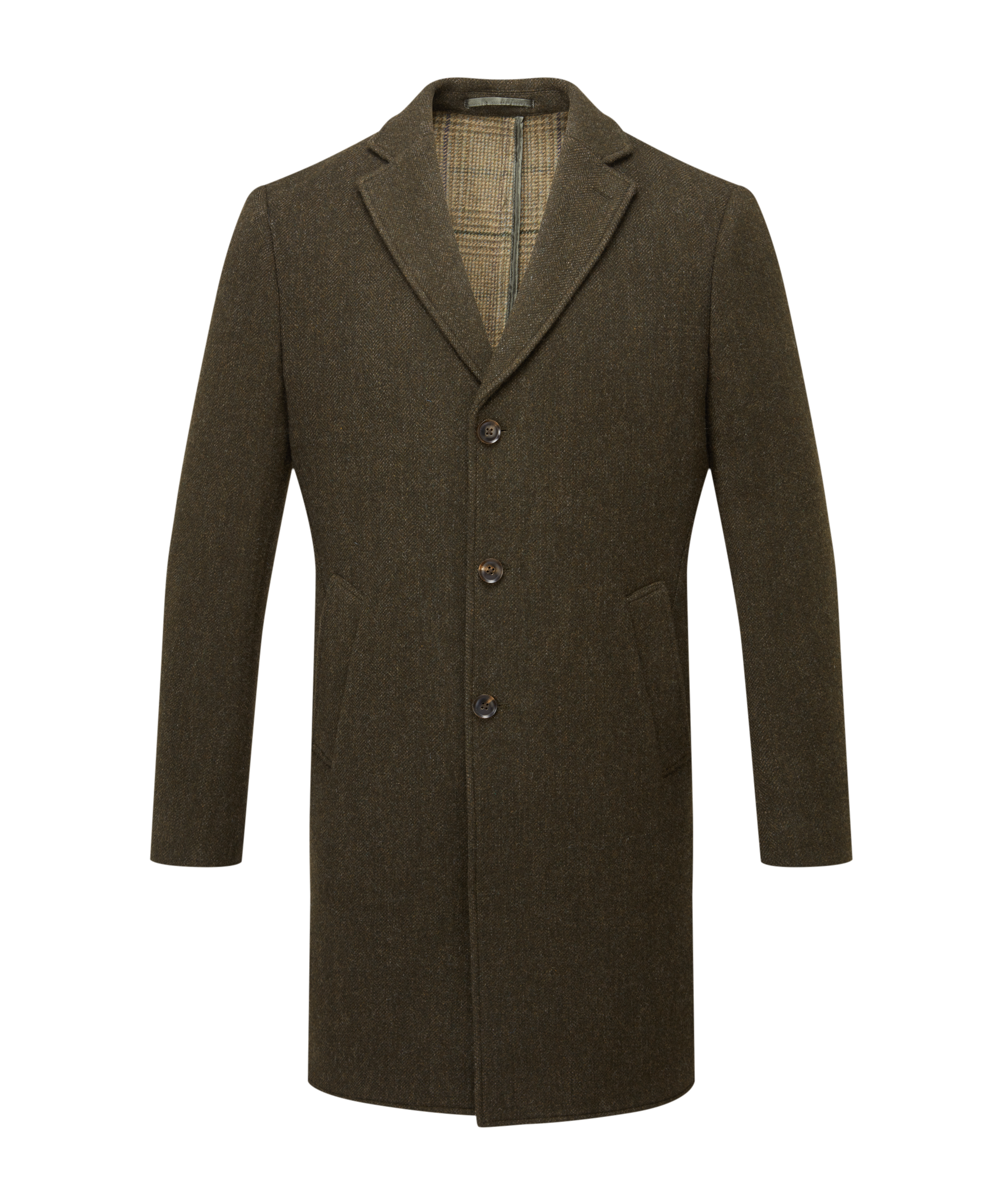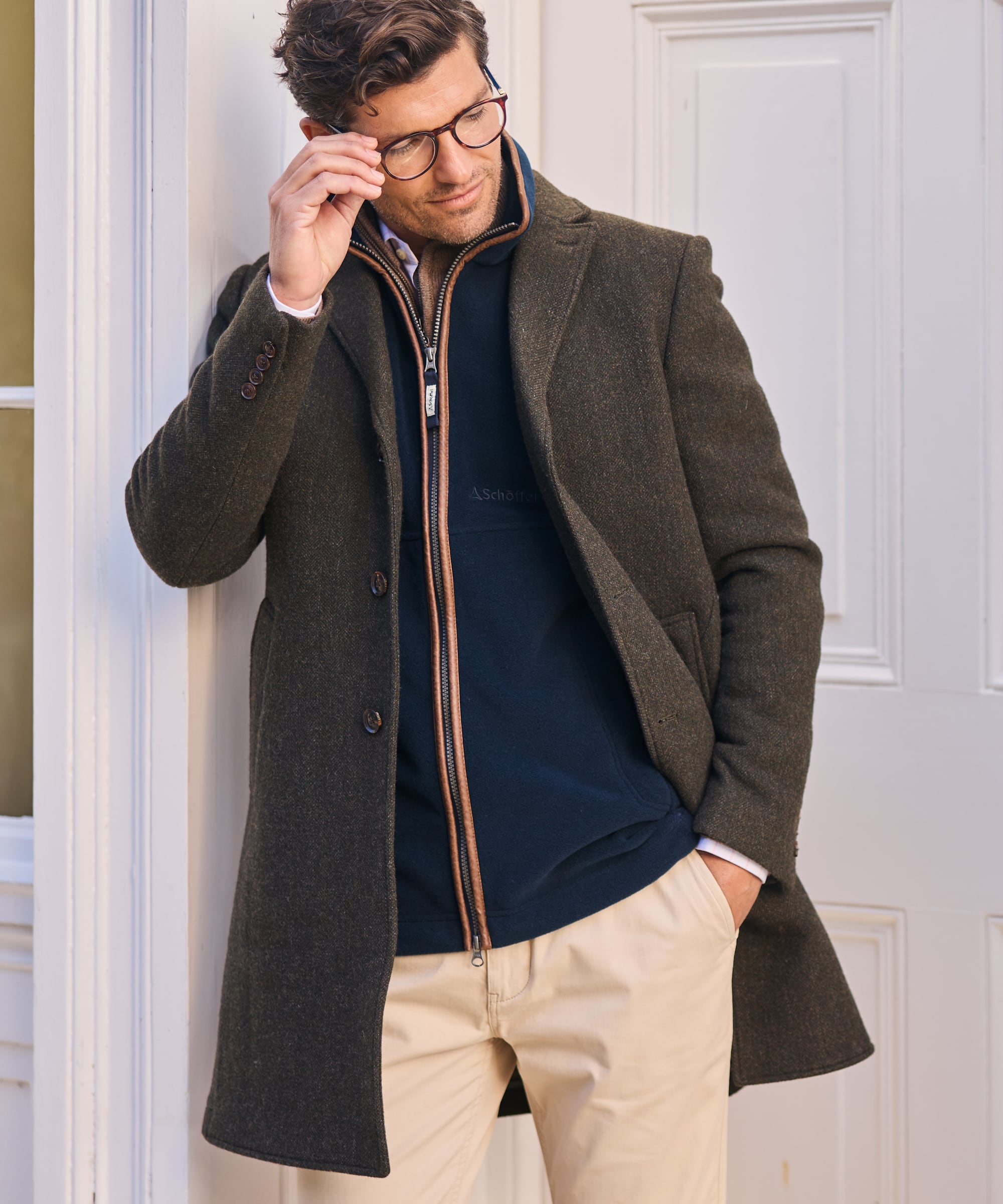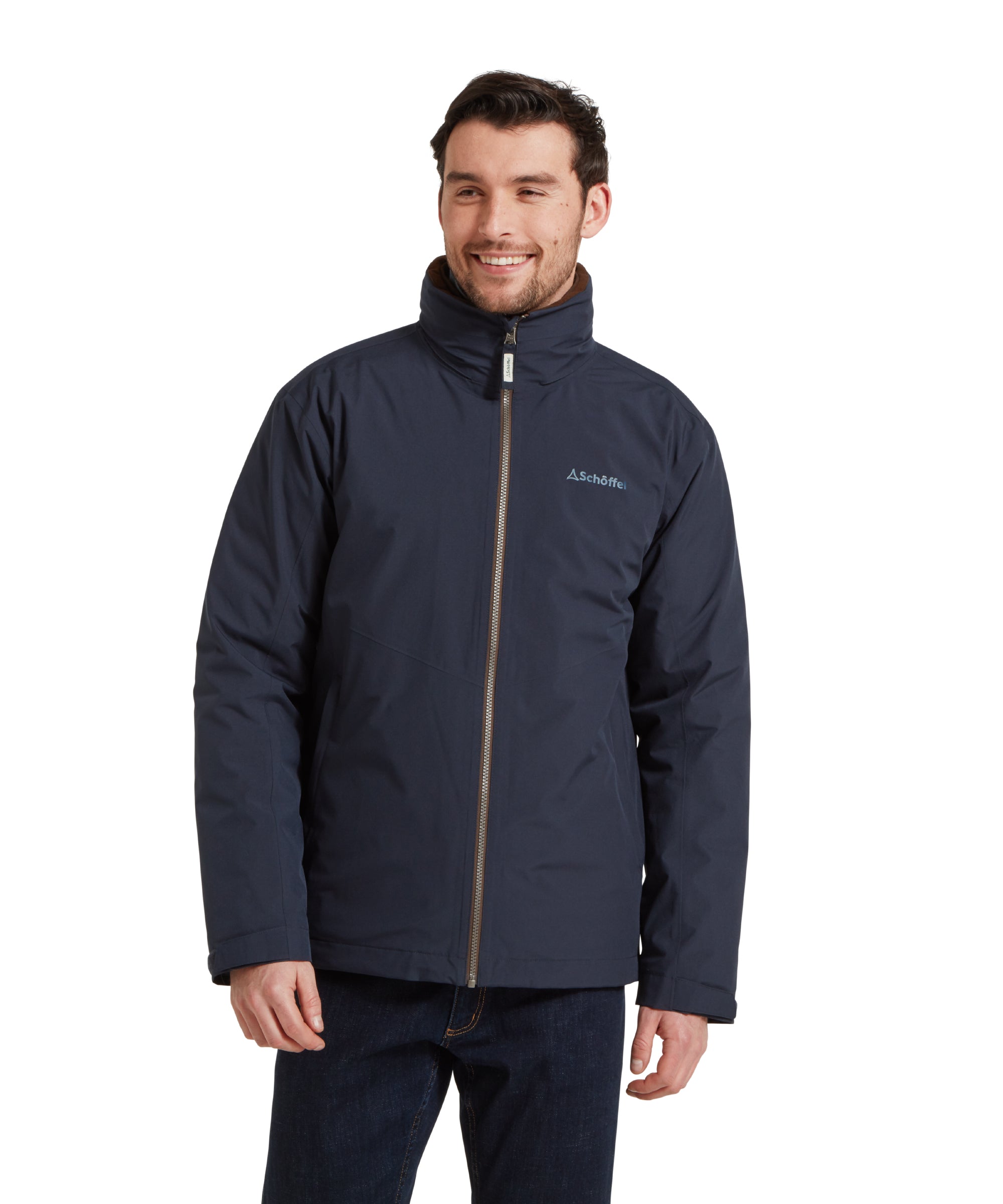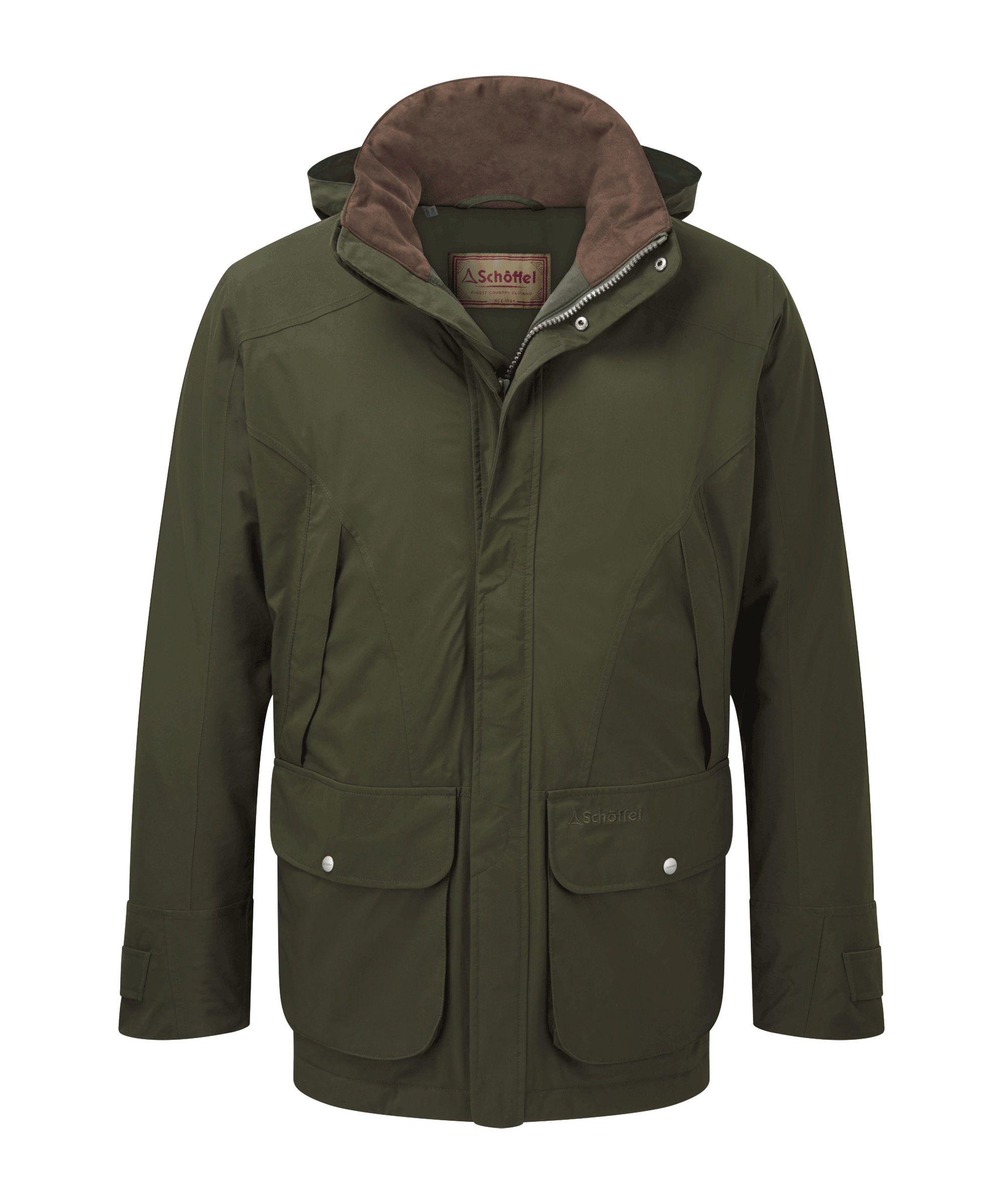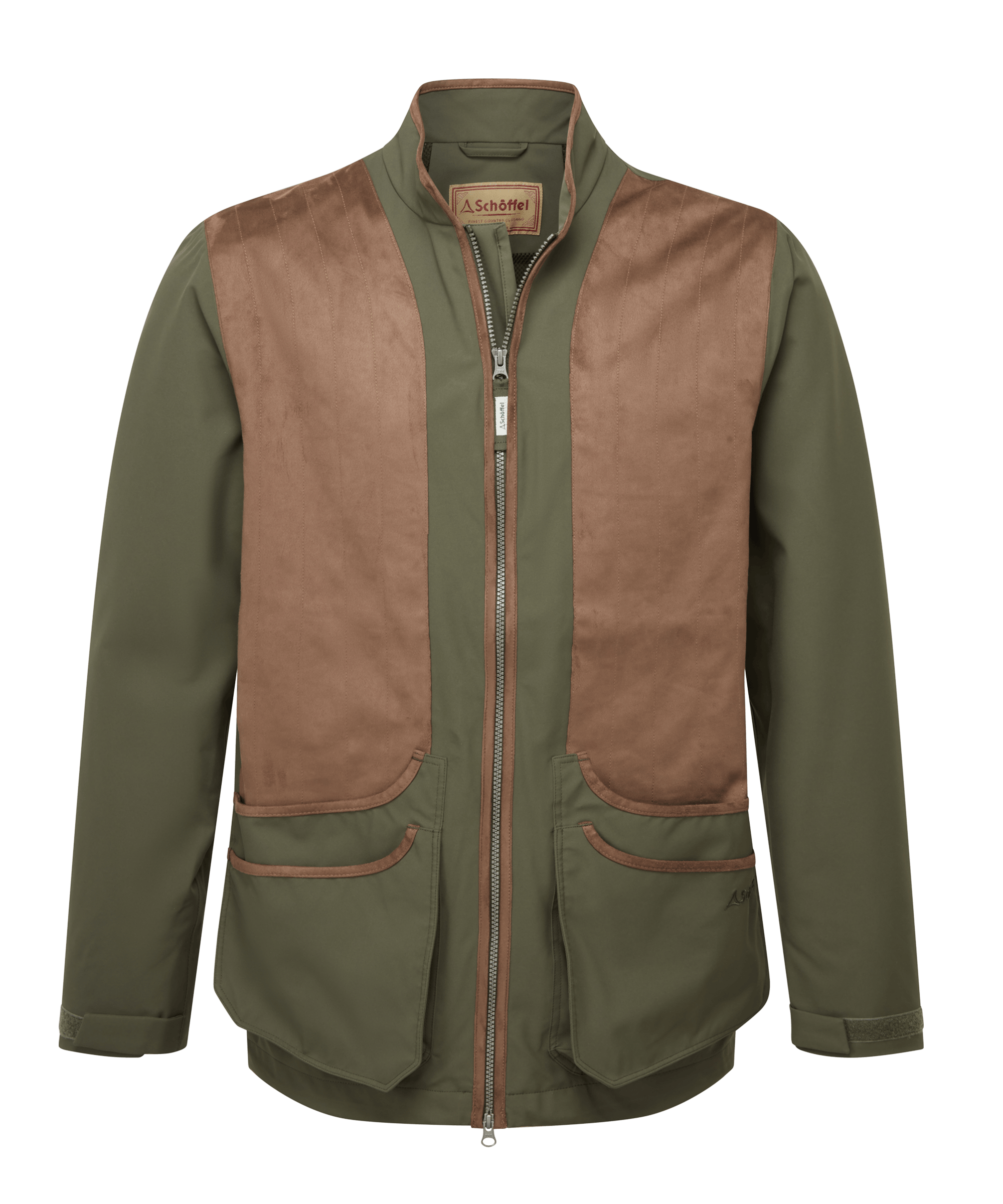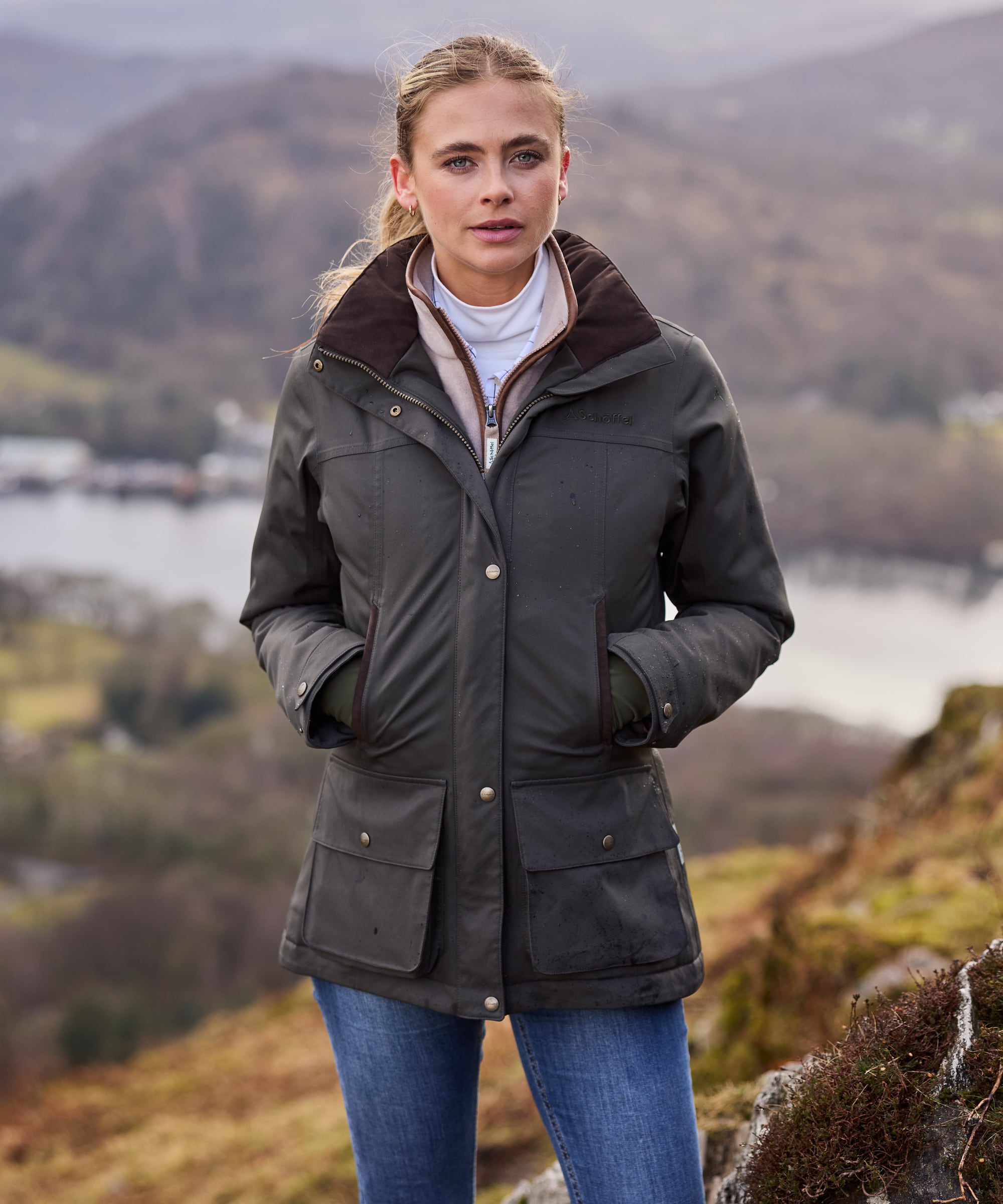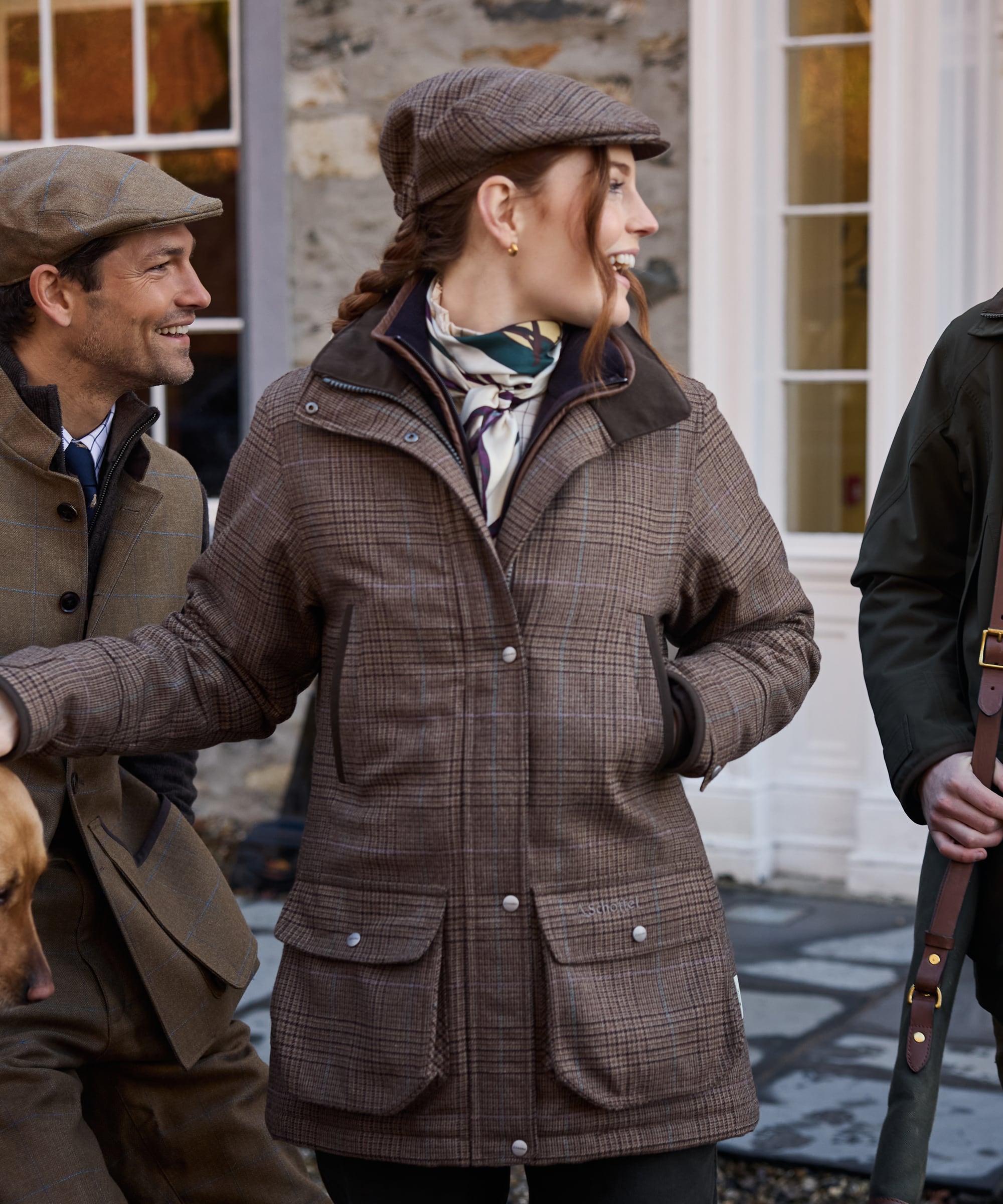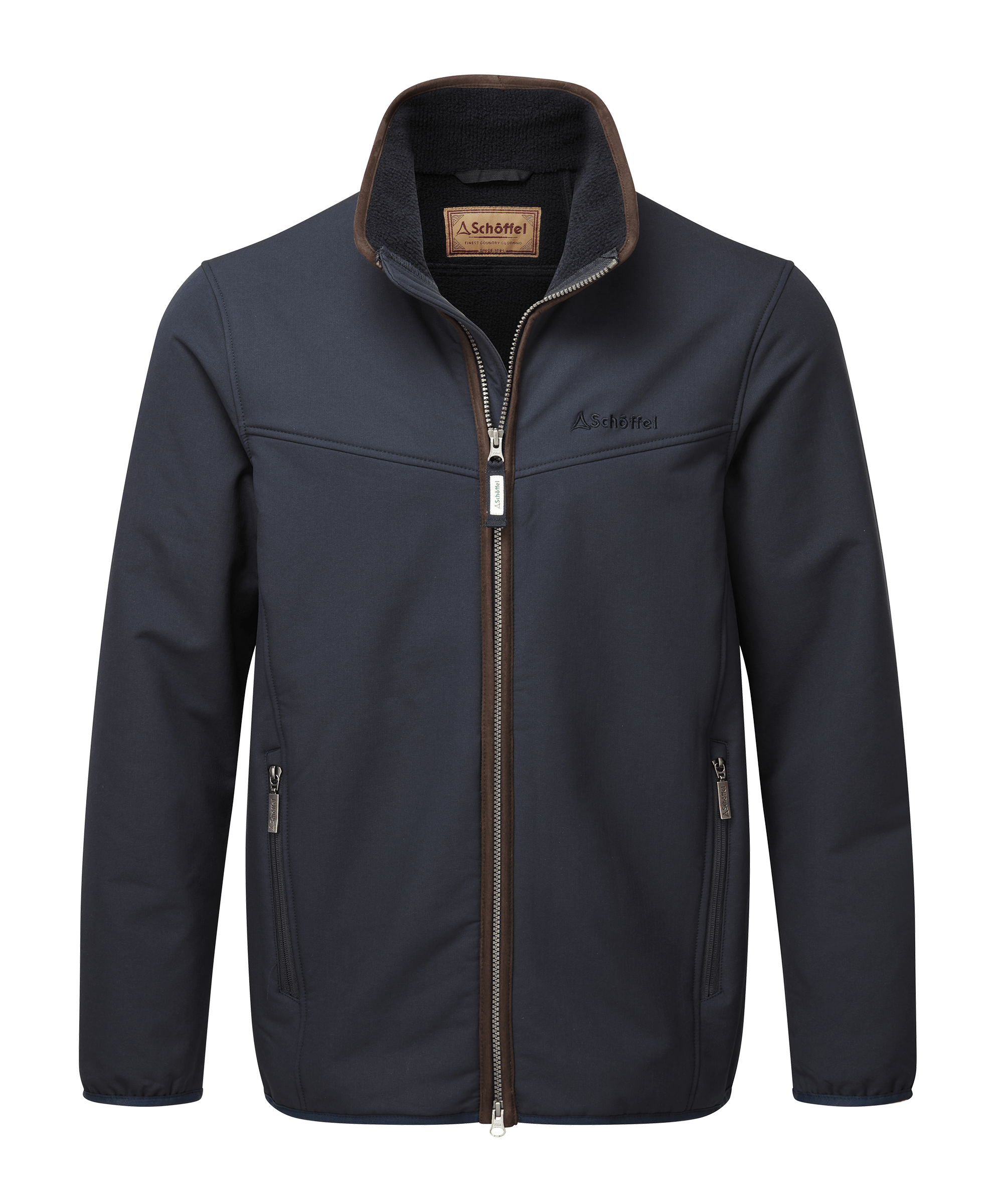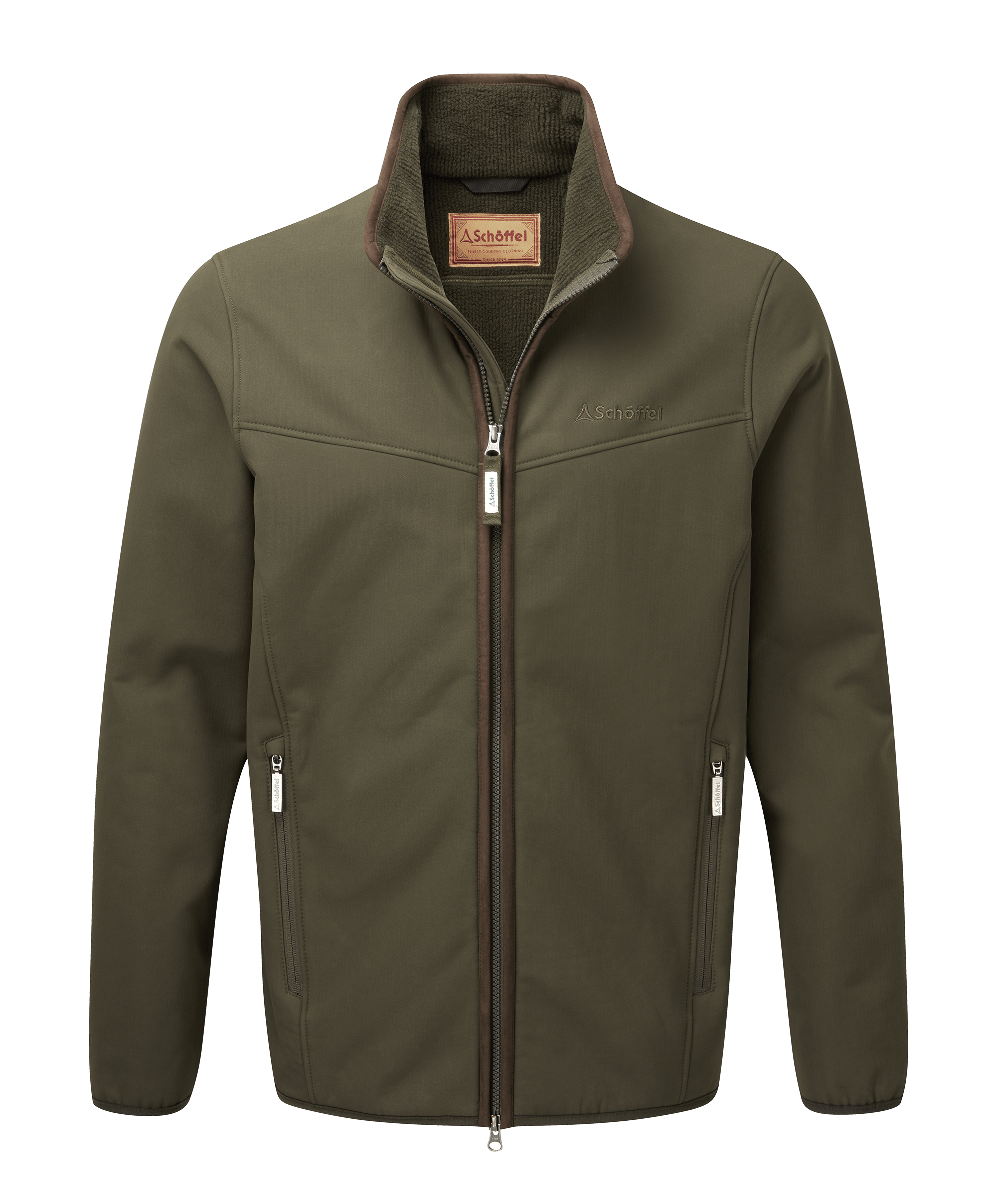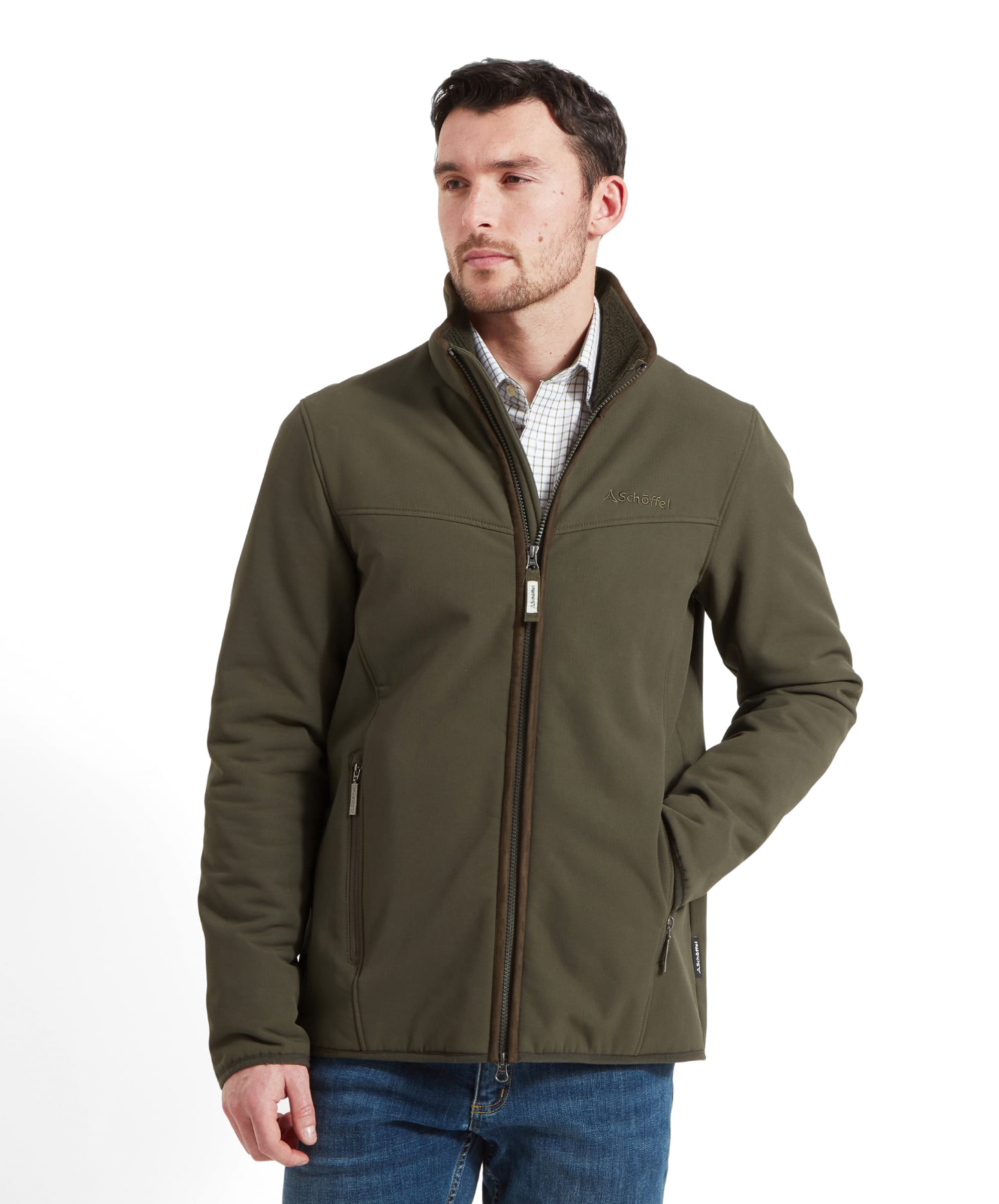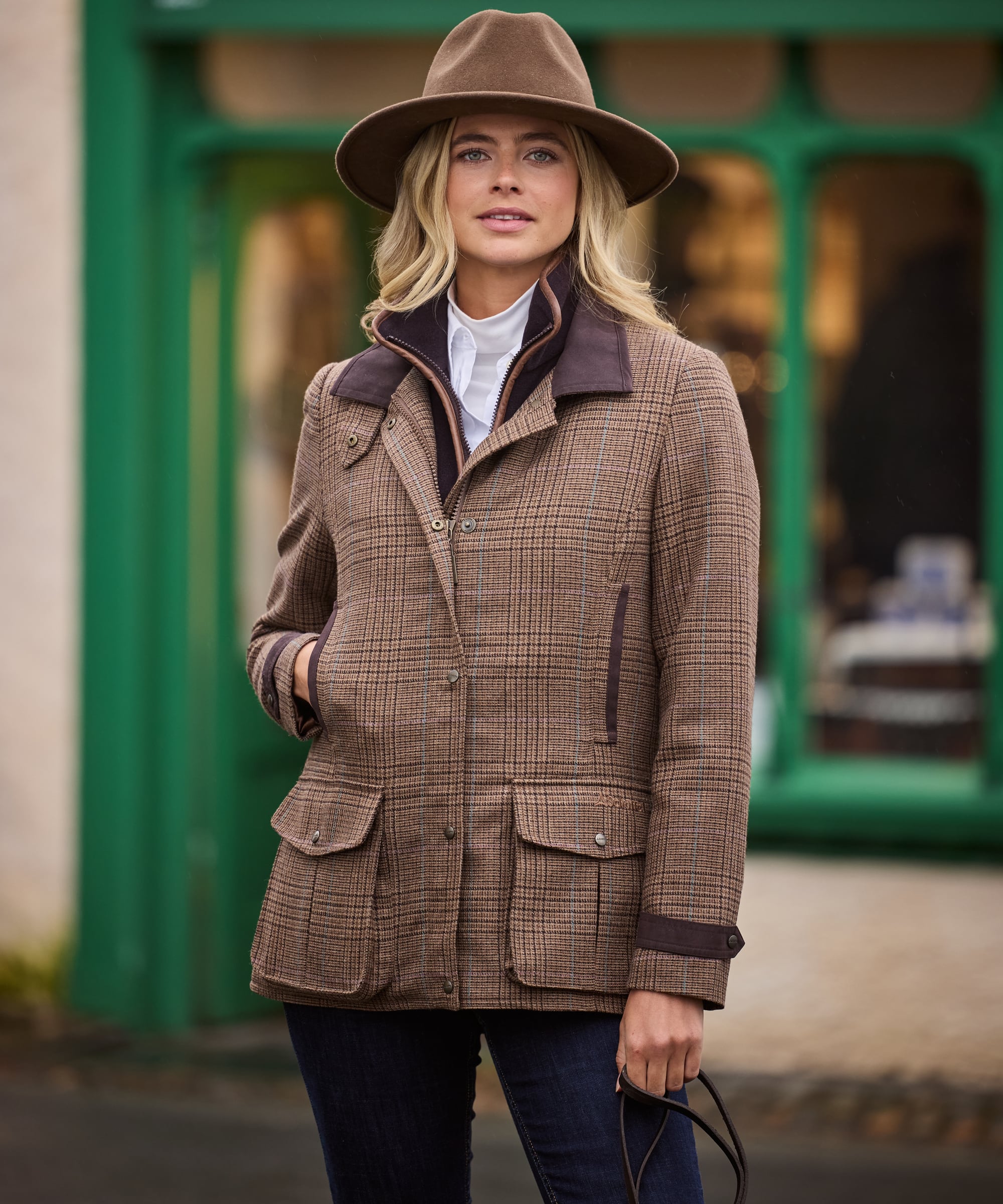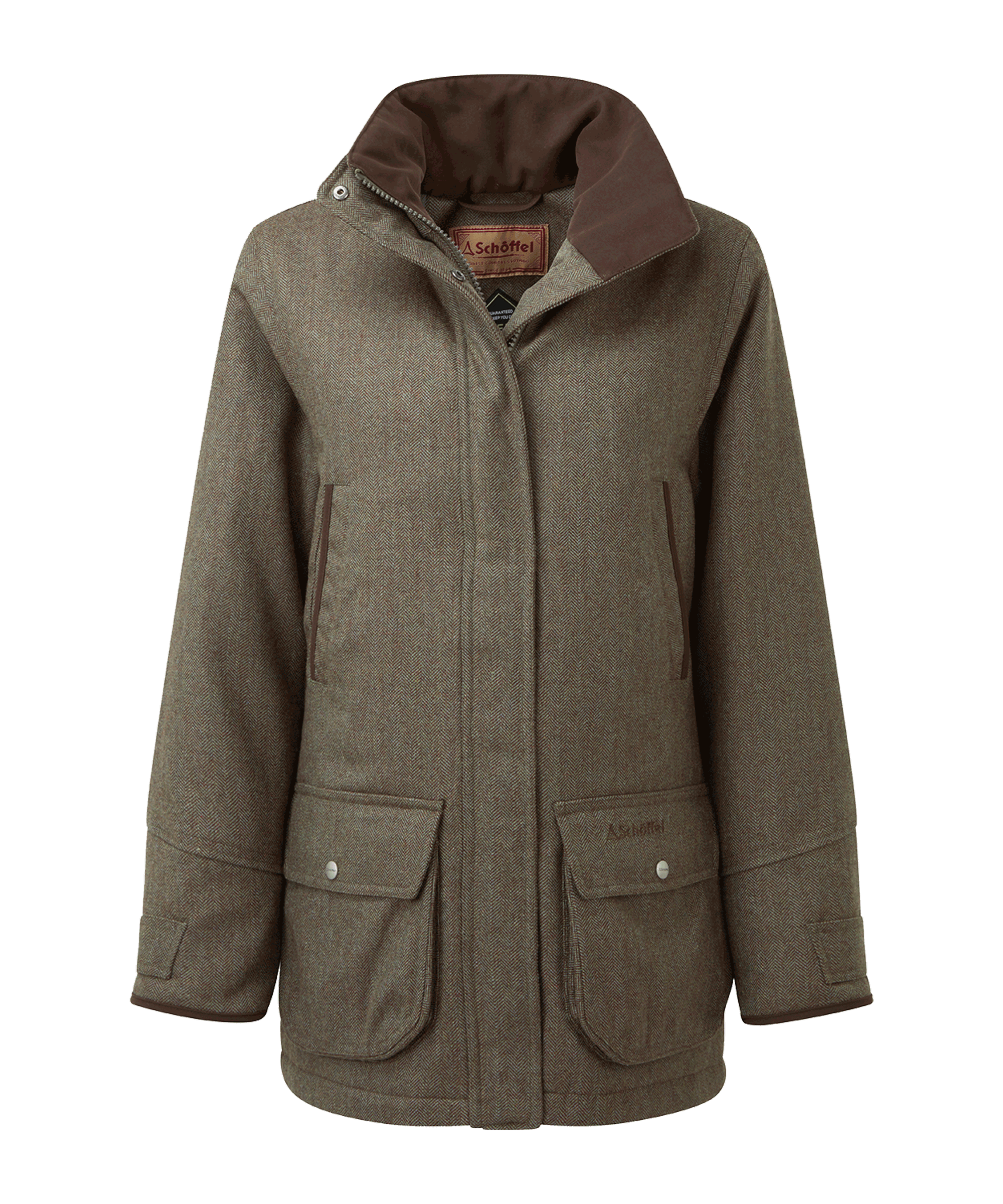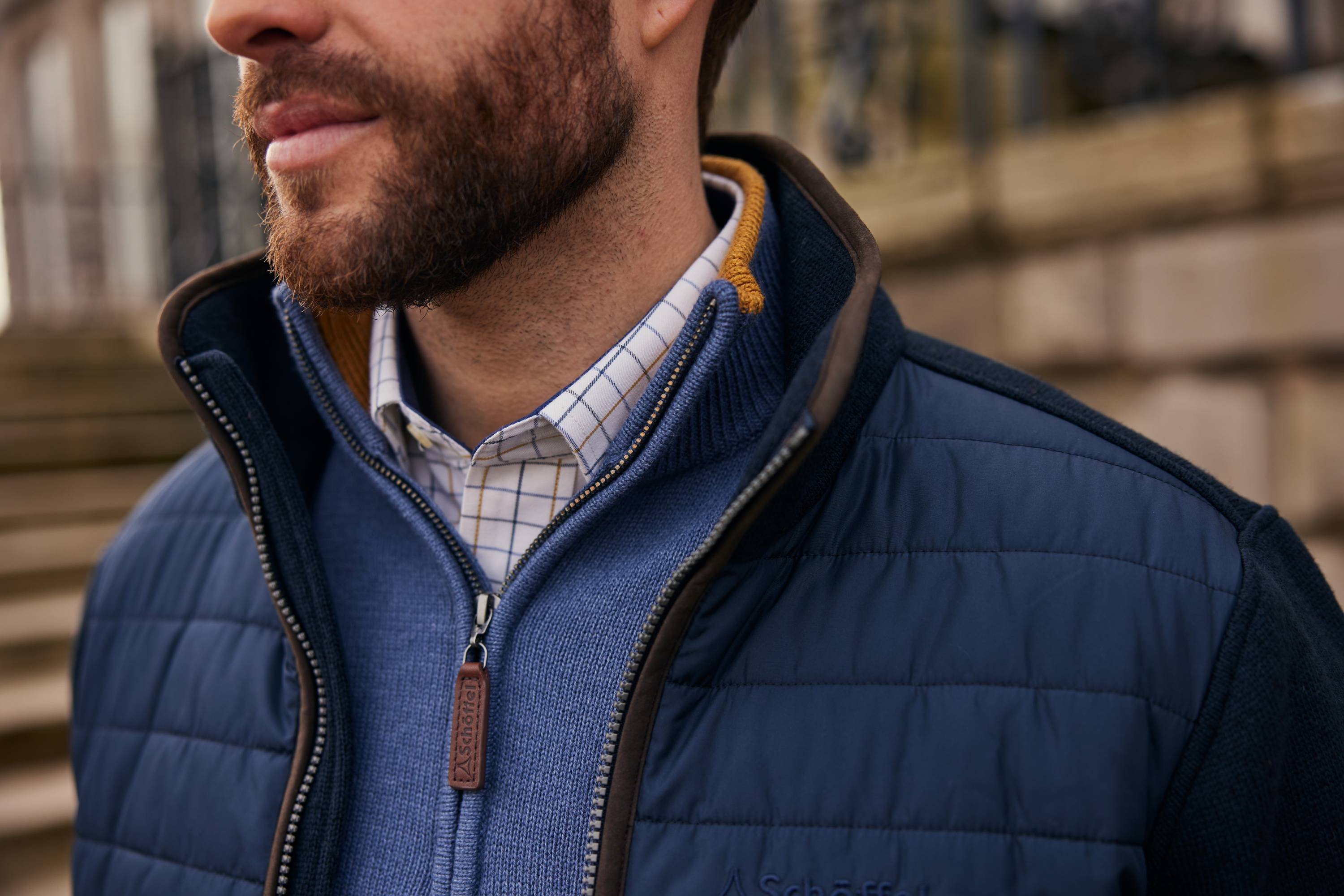

The ultimate layering guide
Layers are essential for keeping you dry, warm and comfortable in all conditions. Learn more about how to layer clothes with our comprehensive guide to dressing with versatility in mind.
An introduction: Why layering your clothes matters
Layers are key when dressing for comfort and performance, particularly when faced with unpredictable weather outdoors – but they can be stylish, too.
Not only will a well-thought-through layering system help to keep you warm and dry in all conditions, stop you from overheating and enable you to move freely; if you master the art of layering, style needn’t suffer.
At Schöffel Country, technical performance is at the heart of what we do. A huge amount of thought goes into the design of our clothing and the sourcing of materials. And we know how best to pair and wear these garments to create outfits that look great, perform brilliantly, and give you lots of options.
In this guide to layering, we’ll share some practical advice to help you get the most out of your layers, whether that’s a cotton shirt, a lambswool jumper, a fleece gilet or a waterproof jacket. We know that versatile clothing options are important to you. And learning how each clothing layer works – and the role each performs in a given situation – is crucial. So here goes...
The basics of layering: What you need to know
First, a brief run-through of the different types of layers for all seasons – what they do, what you should be looking for from them, and how they work together.
The base layer: The foundation of comfort
What is a base layer? Put simply, a base layer is the first layer you put on – the one you wear next to your skin. It helps to regulate your body temperature by retaining warmth and wicking away perspiration. And, because it’s worn next to the skin, it needs to be soft, comfortable and unrestrictive.
Of course, your choice of base layer will vary depending on the temperature outside and your chosen activity. Merino wool base layers are popular because of their light weight and natural breathability. You will often find, though, that starting your outfit for the day with such a base layer isn’t always necessary in milder weather or when you are changing often between outdoor and indoor environments, when a top or cotton shirt – such as these options for men and women – tend to be the go-to.
The mid layer: Insulation for warmth
Options abound when it comes to mid layers. There’s so much choice in fabric, fit, and technology that it can be hard to know where to start when choosing a layer that balances insulation, breathability and style.
In the mid layer class, we have gilets, quarter zips, jumpers and the like. Ideally, a mid layer is quick and easy to dry and excellent at retaining heat while wicking away any moisture. Mid layers also shouldn’t be too bulky.
Again, the conditions you will be in and what you intend to pair it with will determine the most suitable mid layer for you. Just how versatile does your layering system need to be? Will your mid layer actually double as your outer layer too? If so, we’d recommend a breathable water-repellent option like something from our down insulation collection. If you're layering for warmth, a down gilet can make an excellent mid layer for very cold days, because its structure comprises tiny pockets of air between the natural fibres that translate to superb warmth-to-weight ratio.
You may, of course, be wearing your mid layer under a thicker, insulated coat for ultimate protection in harsh weather. In which case, opting for a lightweight jumper made from lambswool or merino might make more sense. What will you be doing during the day? Will a few hours in the cold stands at the rugby be followed by a trip to a cosy pub, for example? How would you dress for each occasion? These questions will help you dress with versatility in mind.
Fleece ticks many boxes as a mid layer, too. Supersoft but hardwearing, styles like our Oakham and Lyndon Fleece Gilets can be dressed down or up for casual and smarter occasions. For those who wish to travel light and value versatility, premium fleece layers have a great deal going for them. Again, a gilet offers excellent freedom of movement, has the practicality of zipped pockets for storing valuables, and can be paired with everything from a t-shirt to a premium tweed jacket.
The outer layer: Protection from the elements
A quality outer layer is essential in cold, wet weather. Many of our outerwear pieces at Schöffel use technical fabrics and proven technologies, making them truly waterproof, windproof and breathable - an ideal jacket for layering.
Waterproof coats and jackets needn’t look baggy or oversized; they should allow you to move comfortably but be well fitting. A range of materials and design features allow us to achieve this at Schöffel Country.
A closer look at the materials used in premium outer layers
Venturi
Venturi is Schöffel’s own weatherproof clothing technology. By combining different membranes and outer fabrics, this laminate system combines protection with maximum performance. Windproof and waterproof, with a minimum water column of 10,000mm, it is soft to the touch and highly breathable. Many Schöffel jackets that use Venturi come in a tailored fit – these examples for men and women are excellent cases in point. This is testament to the fact that ultimate protection needn’t come at the expense of shape and fit.
GORE-TEX
At Schöffel we’ve been working with GORE-TEX for more than 30 years. With a minimum water column of 28,000mm, this technology consists of a series of membranes that together keep bad weather at bay without causing overheating. GORE-TEX is used in some of our more traditional style winter coats, too. The men’s and women’s Ptarmigan Tweed Coats are prime examples – both feature a GORE-TEX Z-liner that will keep you dry in the heaviest of rain.
Dermizax
Dermizax is a technology that we’re using more and more at Schöffel Country due to its superb characteristics. The technology of choice, as seen in a range of our highly technical waterproof jackets, it is also windproof and extremely lightweight. But what sets it apart is that, despite being a breathable fabric, it has no pores, which means that no matter how much water you throw at it, it will never get clogged up or heavy. Easy to care for, with a waterproof rating that exceeds 20,000mm, Dermizax also features multi-directional stretch for comfort and ease of movement.
Insulation in outer layers
When it comes to insulation, outer layers vary. Some jackets are commonly referred to as ‘shells’ and will protect you from the rain and wind but will need to be paired with insulating mid layers for warmth.
Many of our high-performing winter coats and jackets, on the other hand, incorporate the likes of down insulation or PrimaLoft insulation for extra warmth. Garments like the Twickenham II Jacket, a padded ultra-warm option, utilises 90% down and 10% feathers to keep the cold at bay. Indeed, for when the forecast is dry, options that boast an Aerobloc lining or high insulation are worthy alternatives to waterproofs. Our popular fleece range or insulated jackets, for example, are extremely versatile products that excel all year round, whether you’re looking for a wind-cutting winter layer or a jacket to throw on to keep the chill at bay on a summer’s evening.
What features should an outer layer have?
Once you have decided on the technology, fabrics and style that suit you, you will also want to think about what additional features you’d like your outer layer to have. Would you prefer a jacket with four-way stretch, like the Hurlingham Waterproof Down Coat? Or maybe storm cuffs and a detachable hood are on your list of must-haves? All Schöffel coats are machine washable and come with a variety of such features – some of our shooting styles even have drainage holes in pockets, and many of our British-tweed coats come with a stain-resistant Teflon finish. Practicality and ease of care, after all, are important considerations.
Layering tips for different activities
The approach you take to layering clothes will depend on your planned activity, the extent to which you’ll be moving around, and how stylish you wish to be.
How to layer for a day at the races
When dressing for a day at the races, whether that’s a trip to your local point-to-point or a day out at a National Hunt fixture, it’s worth bearing in mind that you won’t be walking a great deal. Depending on the occasion – and the enclosure – you may wish to opt for a smarter outfit, too. We’d recommend a tweed coat over a quality shirt, some knitwear and, if it’s particularly cold, a fleece gilet. You can always remove a layer if needs be.
Similarly, if you’re standing on the sidelines of a sports game in colder weather, your approach to winter layering might be very simple, albeit more casual, and a padded insulated jacket over a lambswool jumper would be a warm and practical choice.
How to layer for a winter walk
When you’re on the move, you generally need to think more carefully about how to layer your walking clothes. With higher levels of activity, the body soon heats up and if you’re wearing too many layers or you’ve chosen layers that are not breathable, you will soon overheat and perspire. On a long dog walk in milder conditions when there is the chance of rain, a non-insulated waterproof jacket or a water-repellent insulation piece over a gilet and shirt might be all you need. On colder days when country walks are on the cards, an insulated jacket over two layers might be the order of the day.
How to layer for shooting in winter
When layering for a day’s driven shooting in winter, versatility is key. In the same day, you will be standing by the peg, moving and mounting your gun, walking to help pick birds, sitting inside a truck or Gunbus, and sitting indoors for a hot meal. So, you need a layering system that will keep you warm when inactive, won’t restrict your movement or gun mount when it comes to shooting, and can be adapted easily through the day as you
remove, swap and change layers to suit the situation.
Even details such as how many cartridges you expect to use will influence what you wear. Will you need a coat with large cartridge pockets? Or, if it’s dry and mild and you only expect to need a handful of shells, could you get away with wearing a fleece layer? Many game shooters will take a couple of shooting jackets of different weights with them so they have options if the weather takes a turn for the worse.
Combining function and style
We keep coming back to the ‘v’ word – versatility – because the ultimate layering system should be truly versatile and not leave you feeling under or overdressed at any point during the day. When designing products for our different collections at Schöffel Country, we do so with style in mind. Yes, clothing needs to perform, but many of our products are as suited to a trip into town as they are a day in the field.
To make the most of your layers, and really allow them to complement each other, think carefully about how you will pair different colours and textures. For a classic country look, you may wish to use different hues of the same colour in your outfit or pair a single brighter layer with more neutral tones. Another good approach is to pick out a colour from another layer – like a checked shirt or a tweed pattern – and match that to a another layer of a similar hue.
A widely accepted rule is to avoid too many bright colours in the same outfit, as they can jar with one another.
Seasonal layering advice
Advice on how to layer clothes will, of course, vary depending on the season. From classic linen shirts with lightweight blazers for summer holidays to the warmest of insulation pieces engineered to retain heat in the coldest of temperatures, scenarios vary hugely.
Layering clothes for spring/summer
When layering for warmer weather, start with the lightest layer possible and gradually build on the weight of garments. Often, a single t-shirt, polo or shirt will suffice for the daytime, but after sunset when temperatures drop, a second layer may be required. Lightweight pieces that are easily carried or packed in a bag, like a down jacket or fleece, are popular options.
Layering clothes for autumn/winter
Layering for warmth isn’t simply about donning as many thick jumpers as possible. By choosing materials that work together and are naturally warm and breathable, you can keep your outfit bulk free and retain an elegant silhouette. Investing in quality fabrics really pays dividends here. Knitwear pieces made of blends of merino, lambswool or cashmere with hardwearing cotton and nylon offer extra durability and shape, and represent a worthy consideration. Not to mention that the texture of classic knitwear pieces goes in hand in hand with the winter season – think log fires, hearty food and crisp days outdoors. Finish this off with a technical winter jacket to keep you warm and dry.
Building your perfect layering system
The best outfits are those you feel most confident and comfortable in, so we’d always recommend starting out by finding the styles you really like, thinking about how each might fit with the intended season and activity, and then working out which pieces work well together in terms of performance, colour, texture and adaptability in the same outfit.
At Schöffel Country we now have a range of products for all seasons. From the softest jersey polo shirts to our iconic fleece gilets, sought-after jumpers, technical insulation and high-performing coats and jackets, a commitment to the highest quality weaves its way through every collection, enabling you to build a layering system that won’t let you down.




